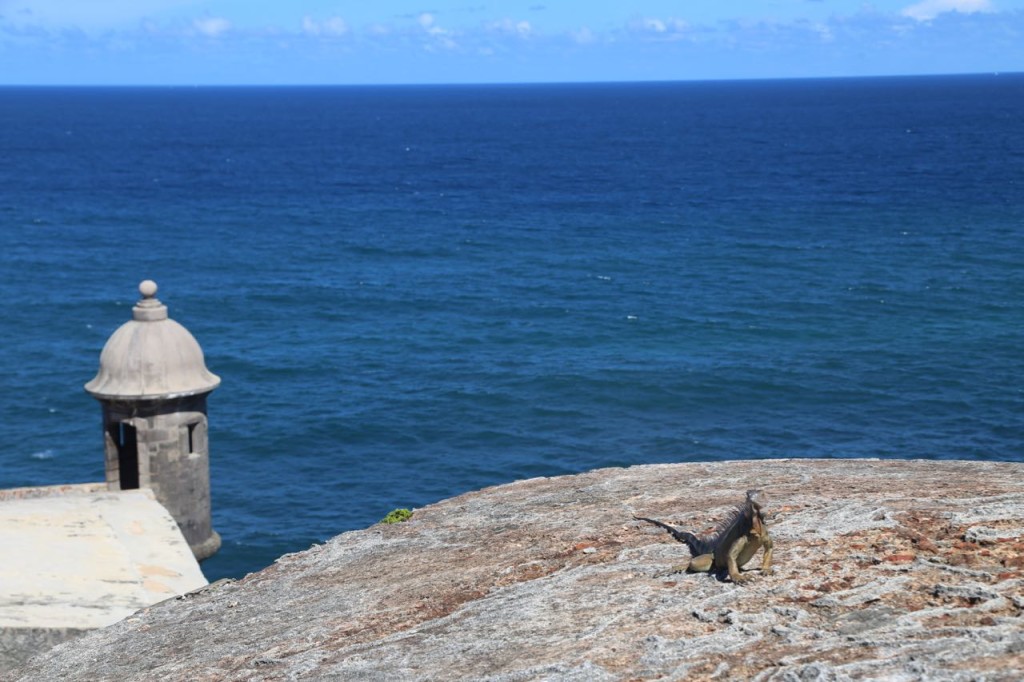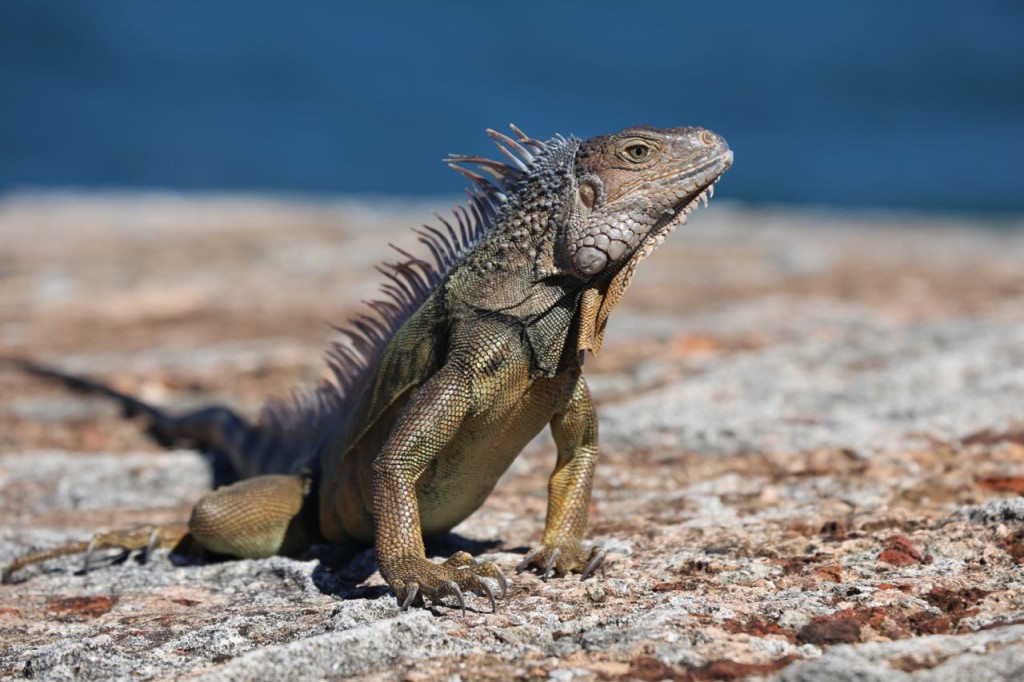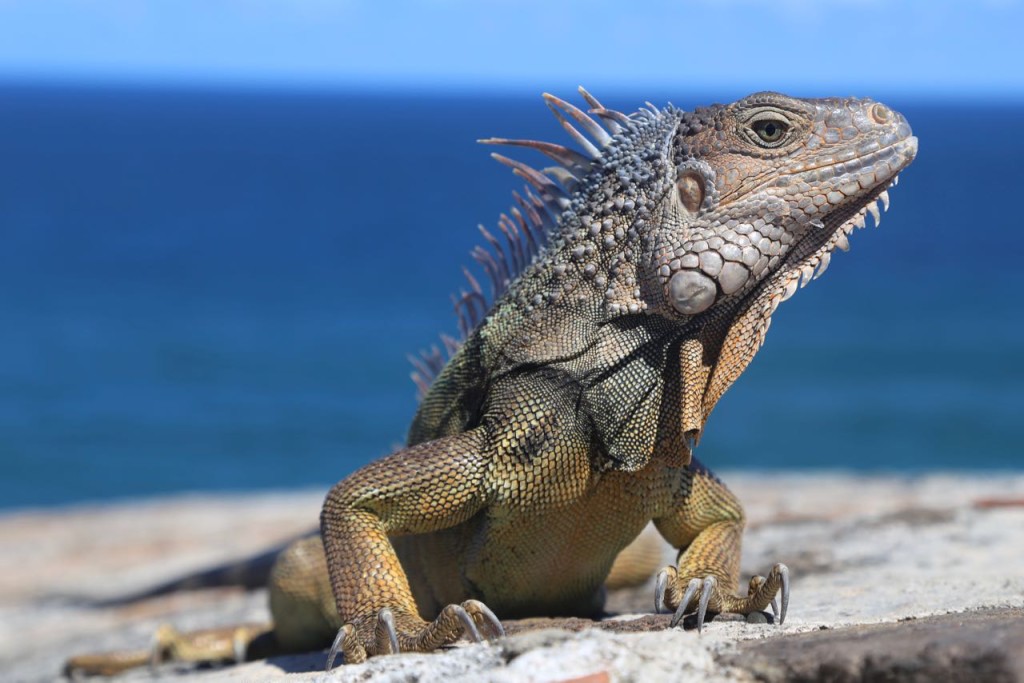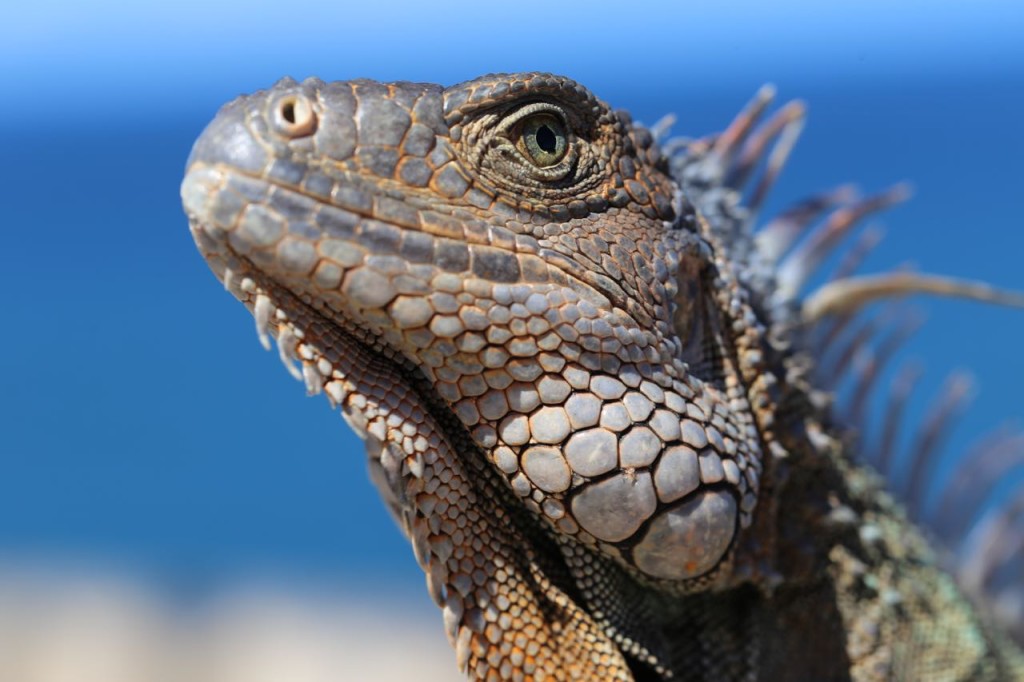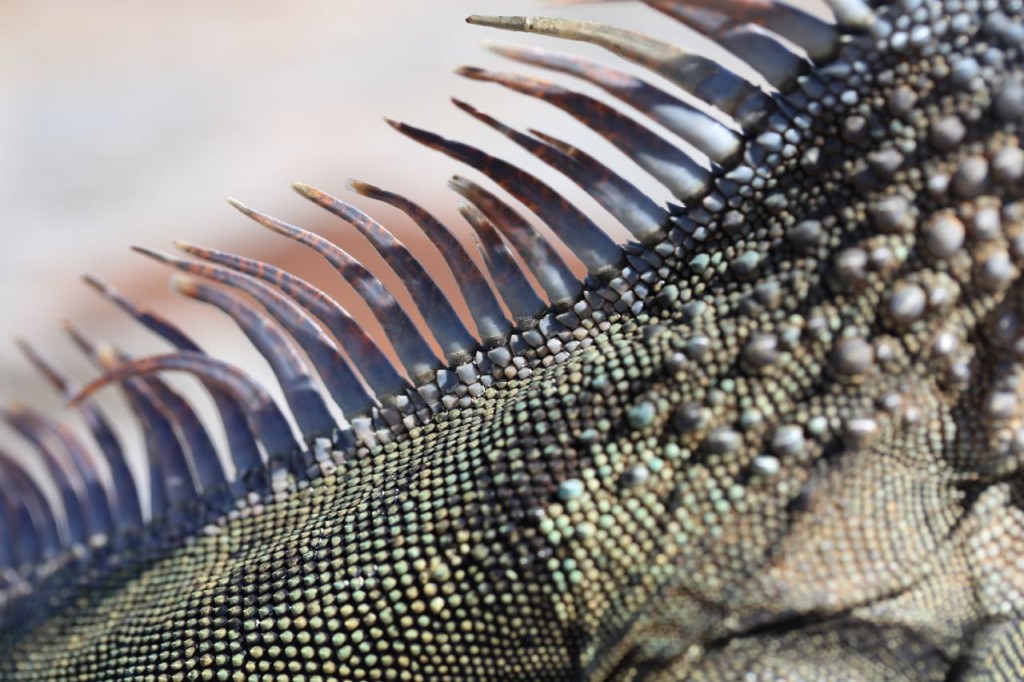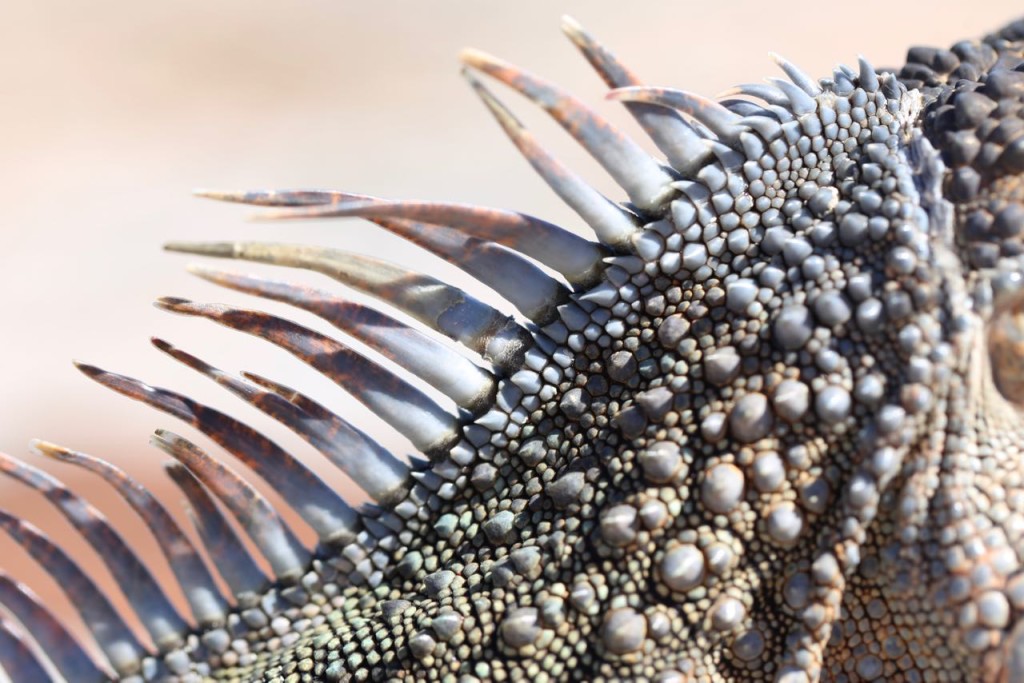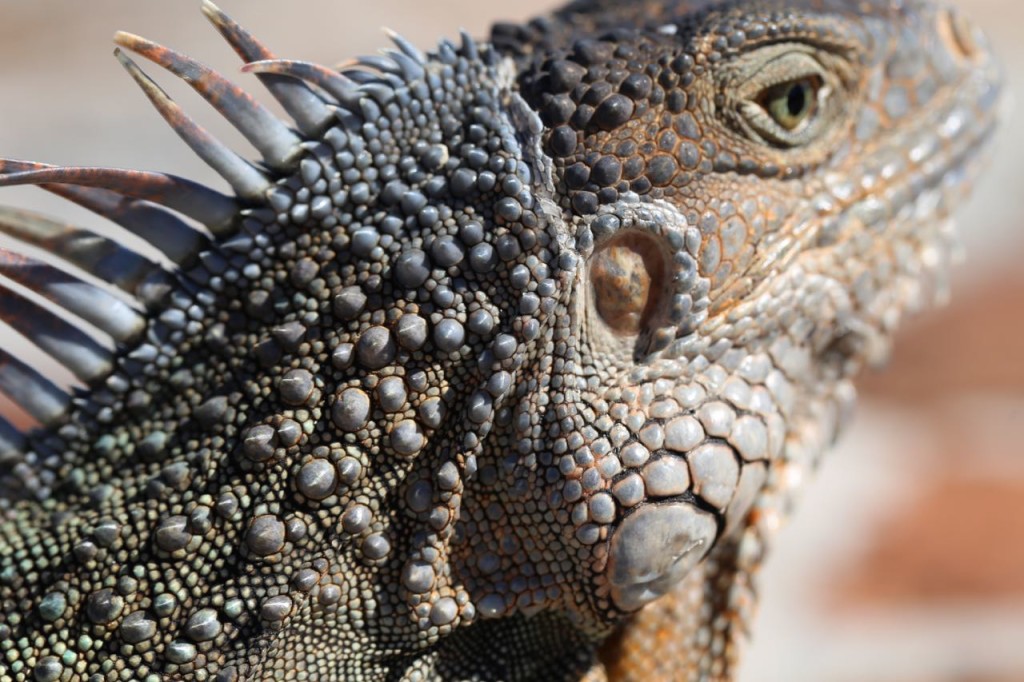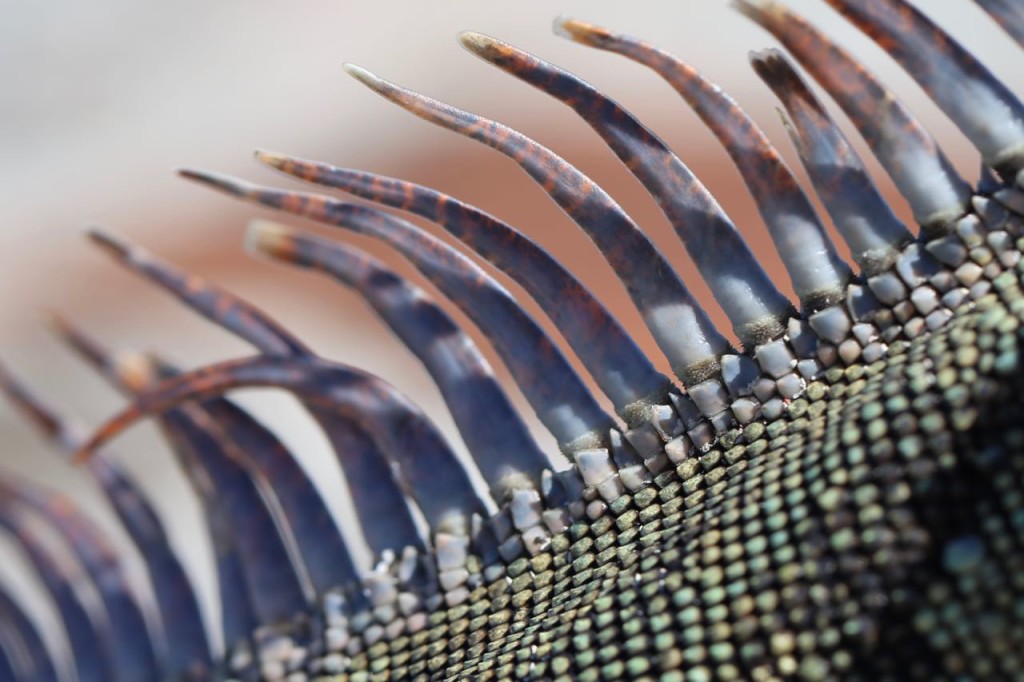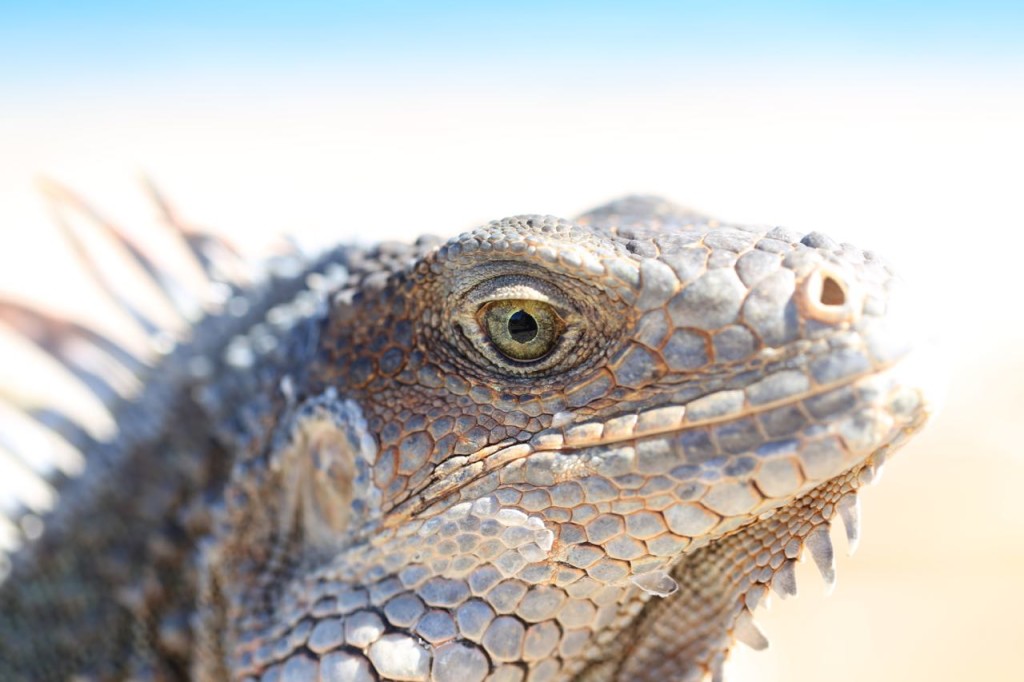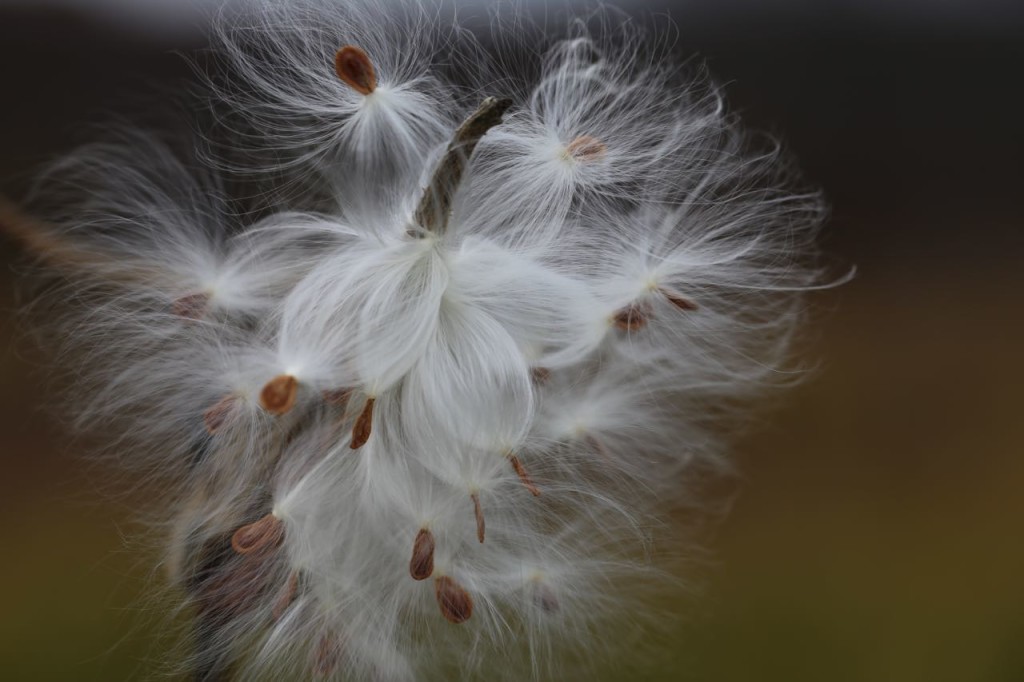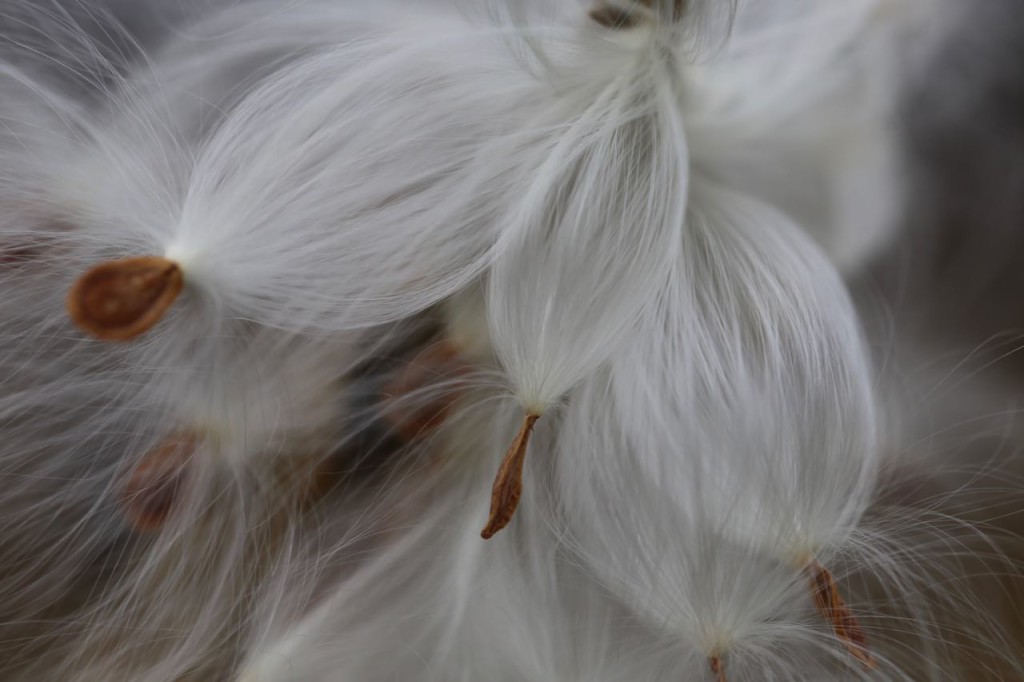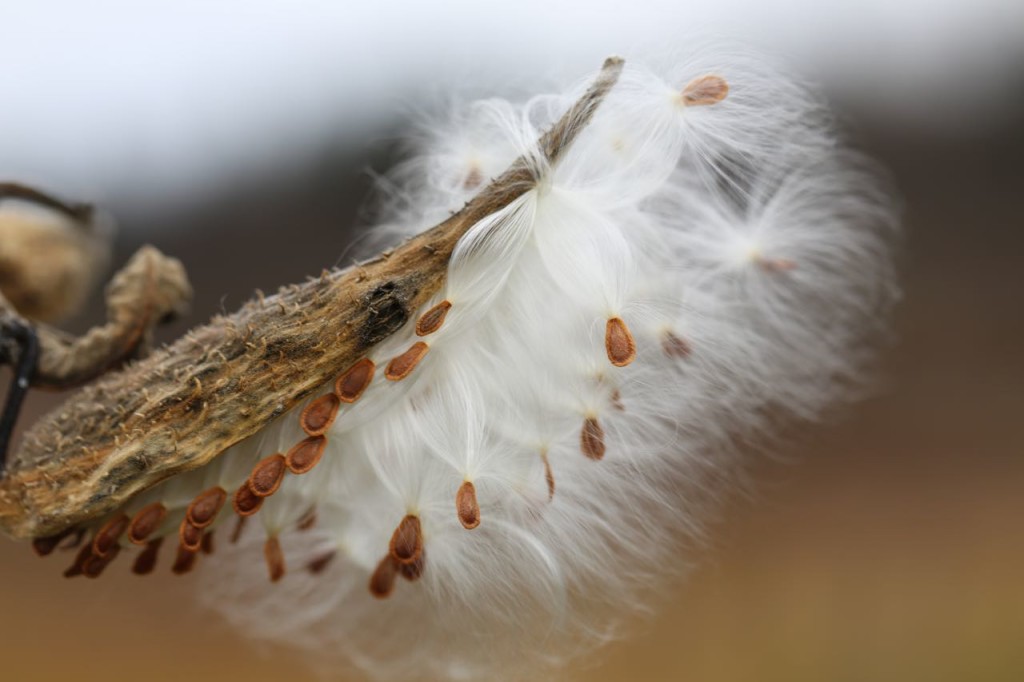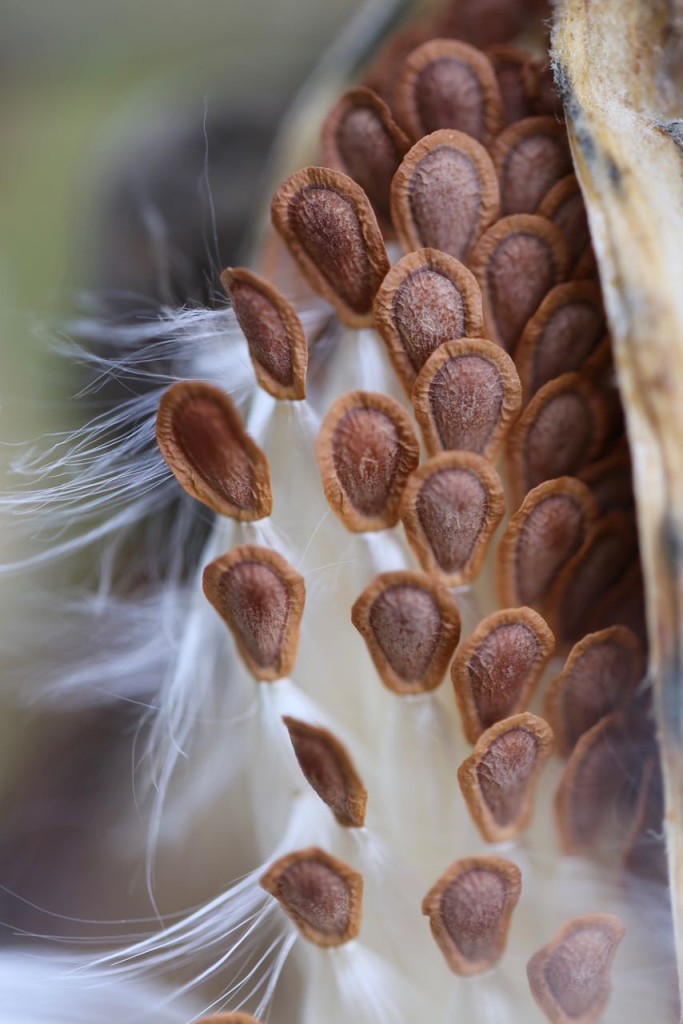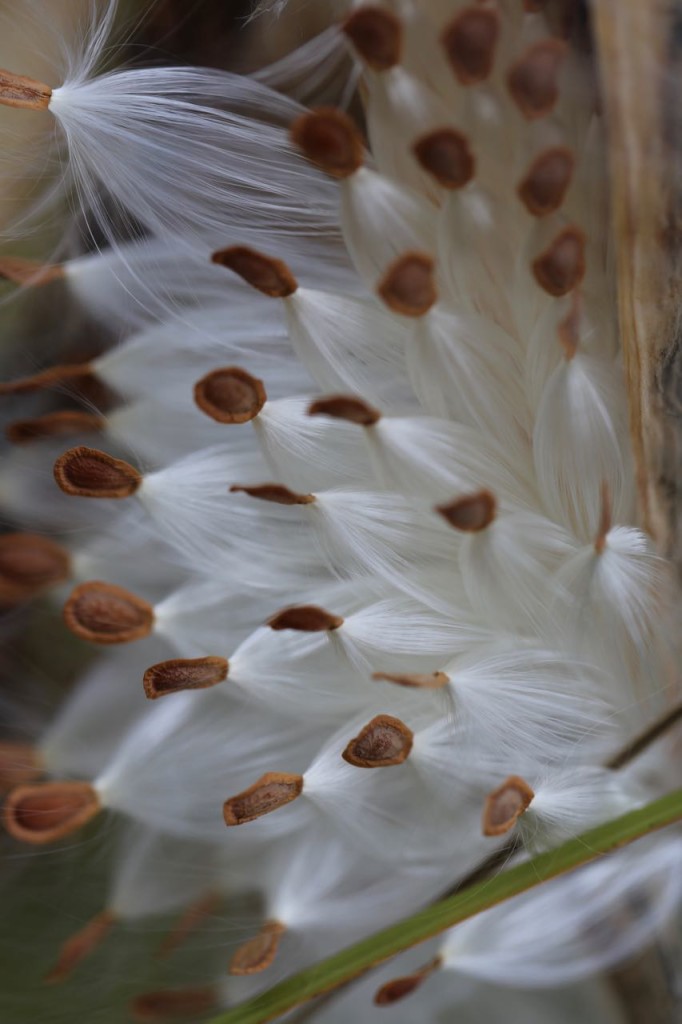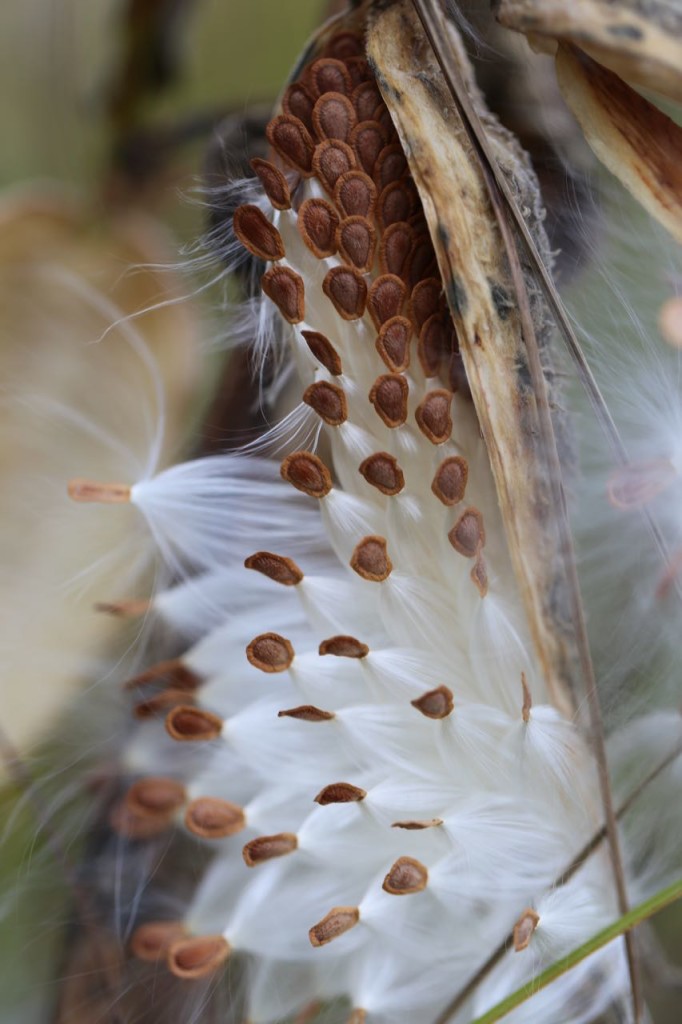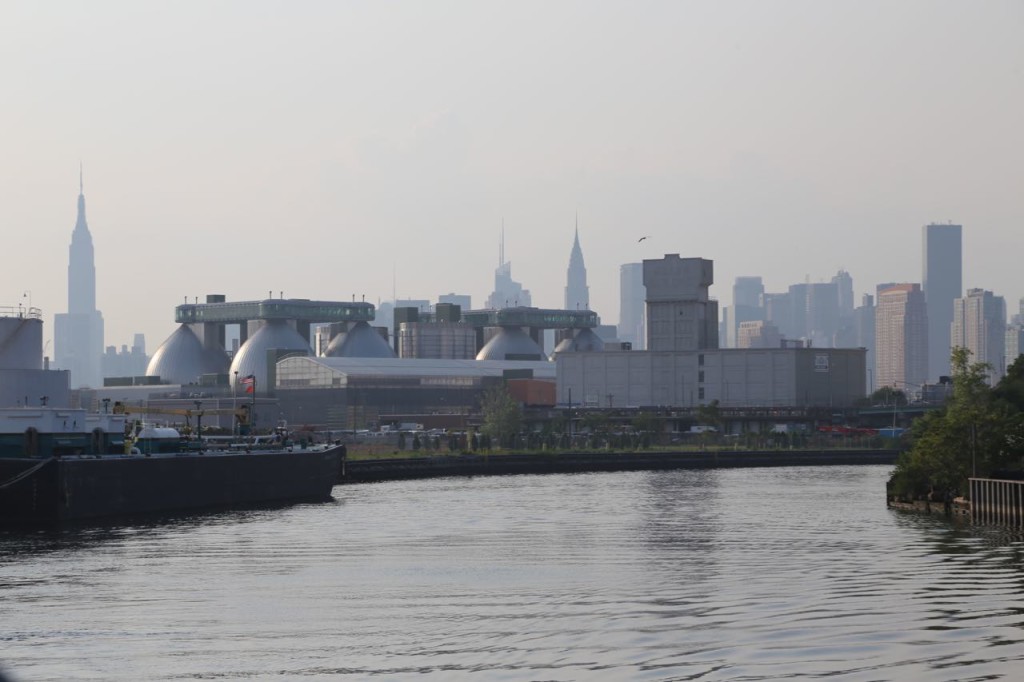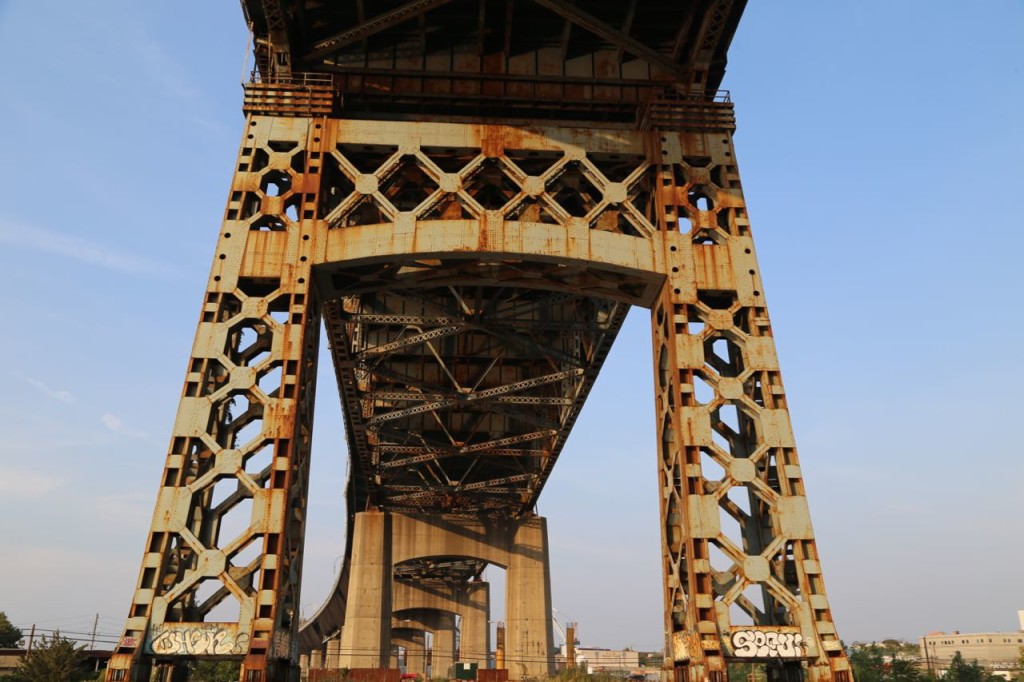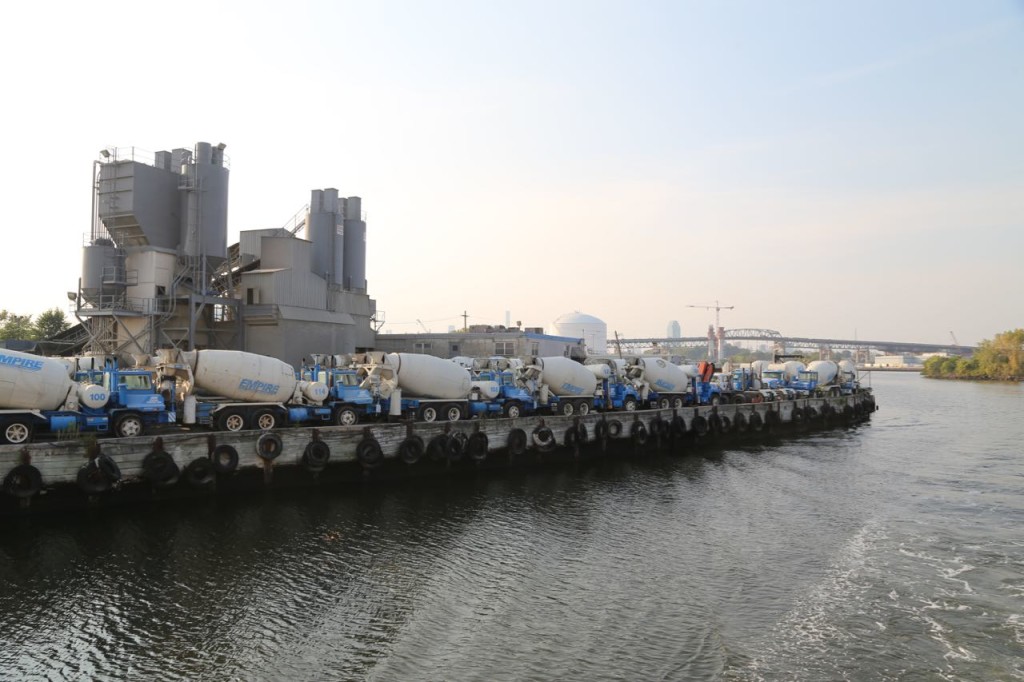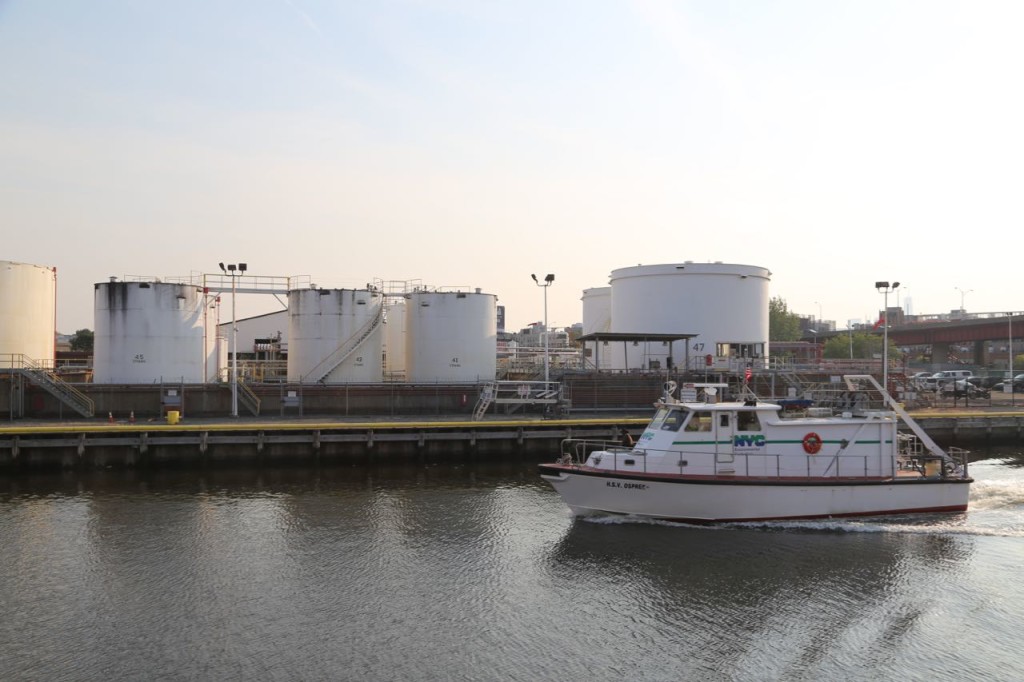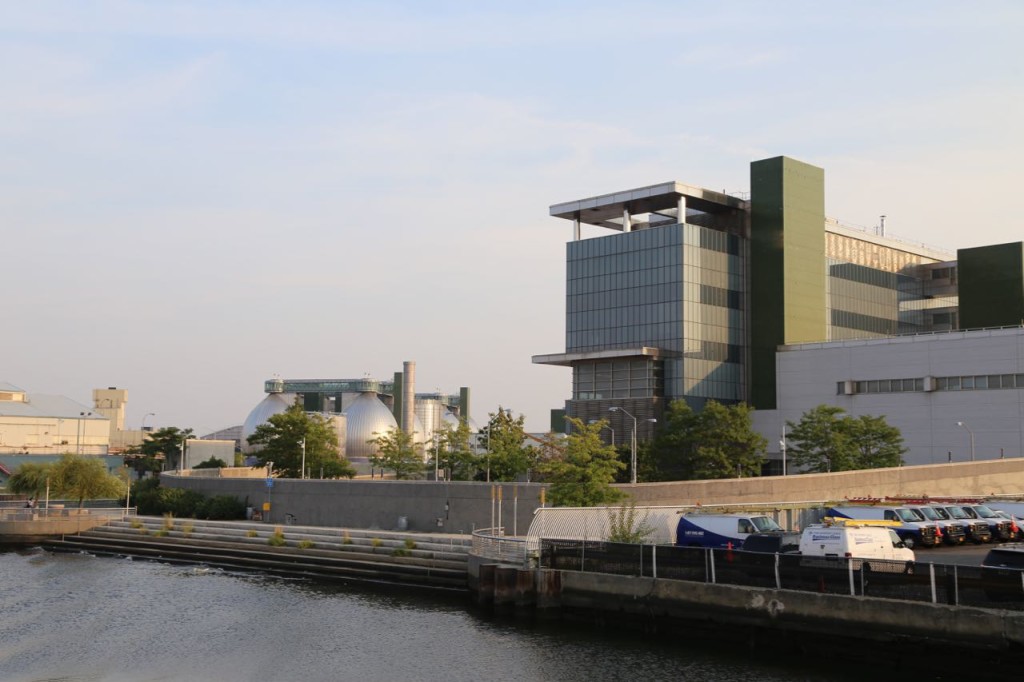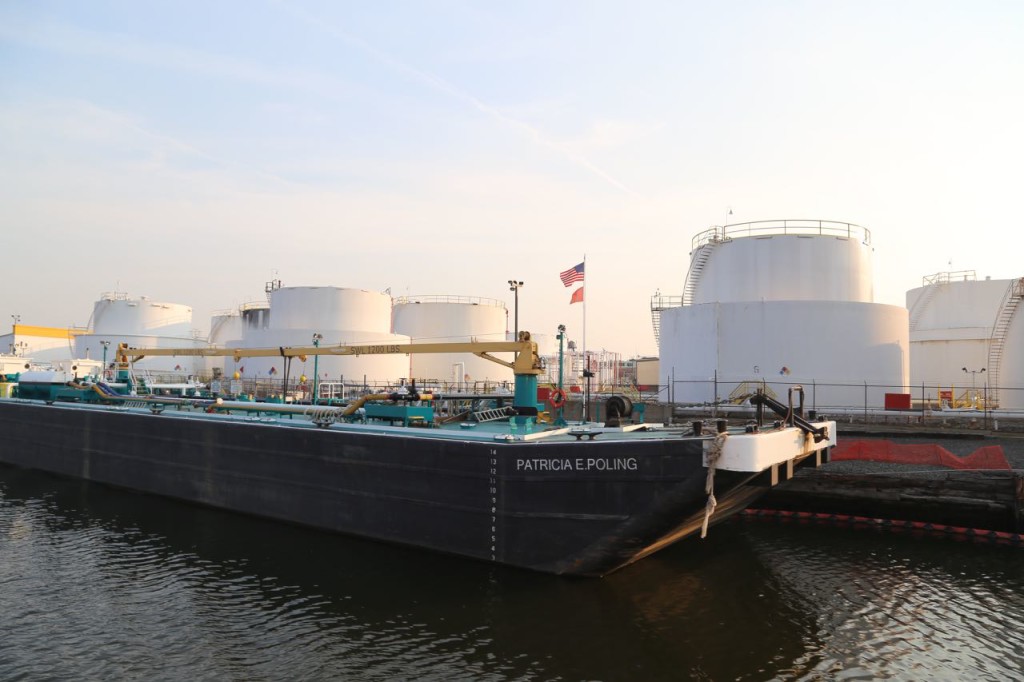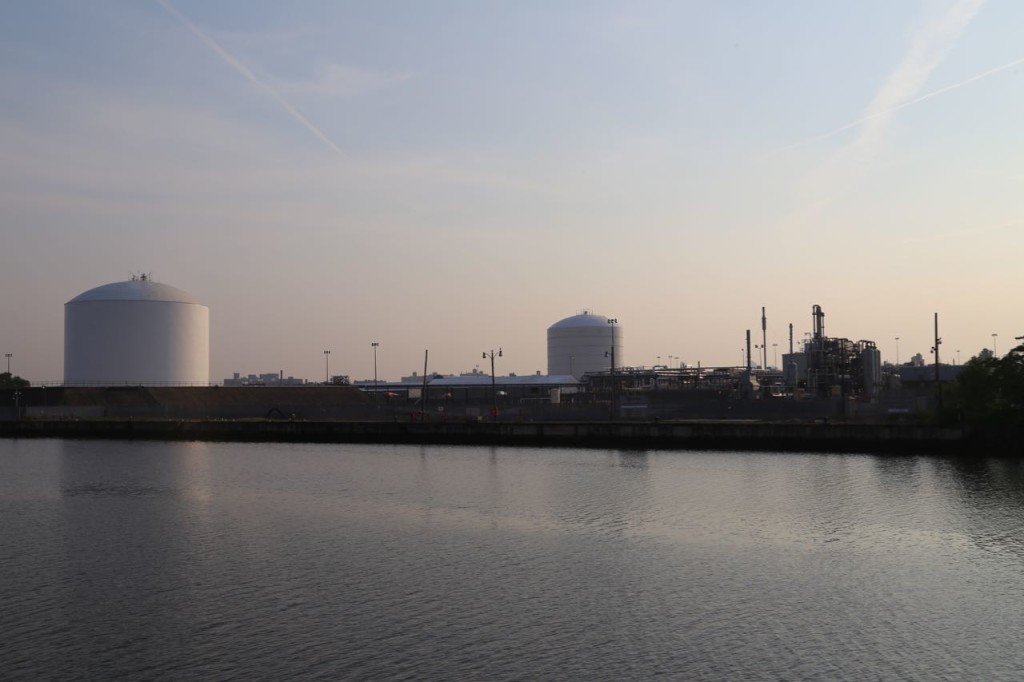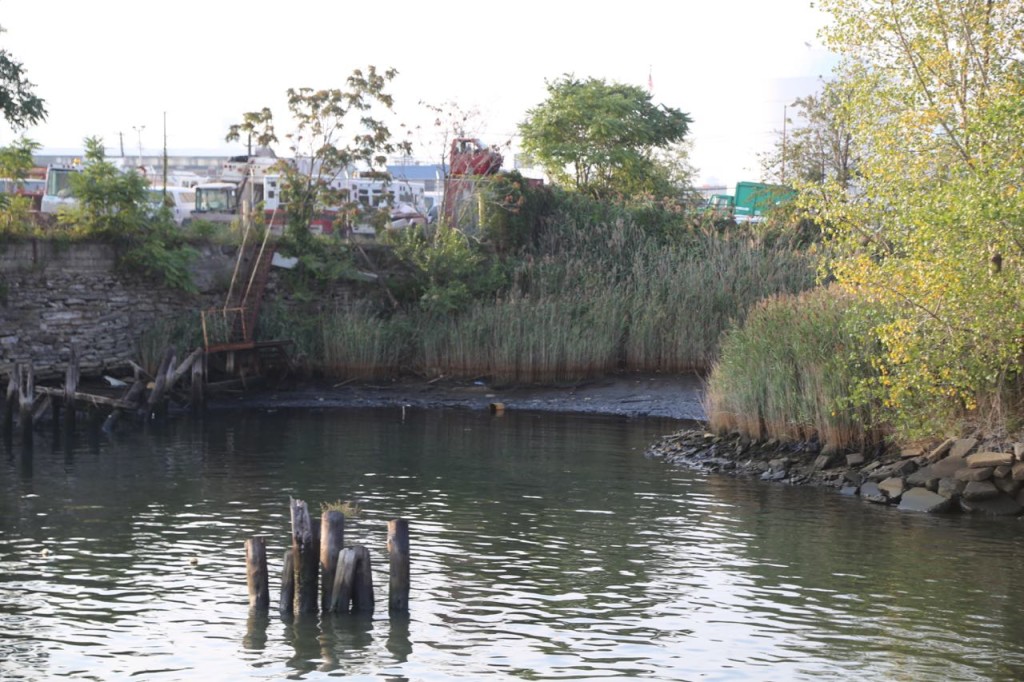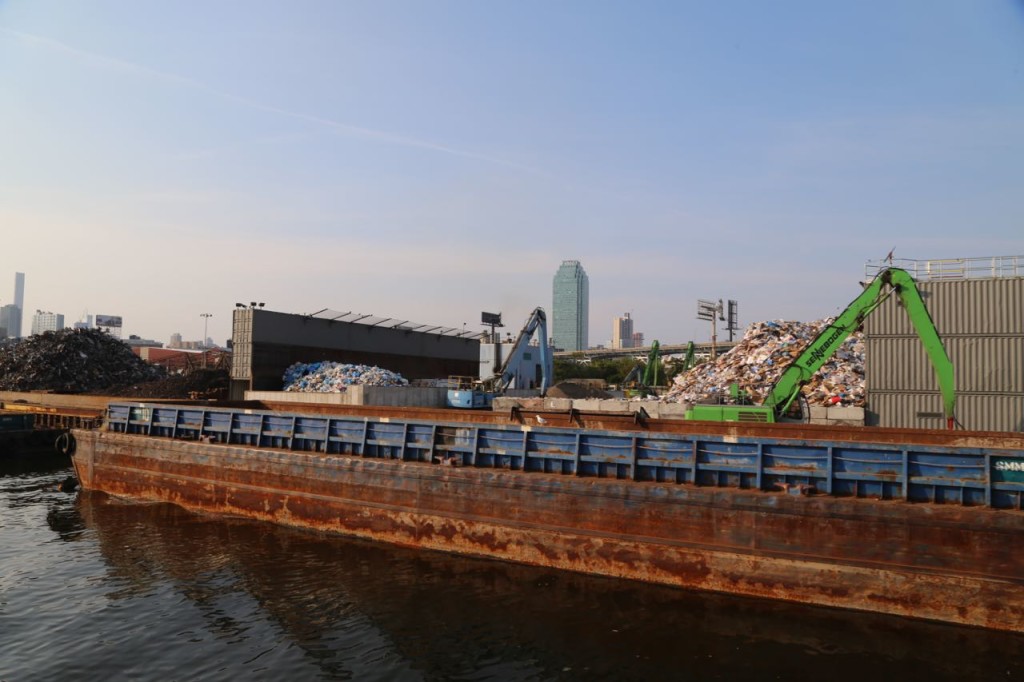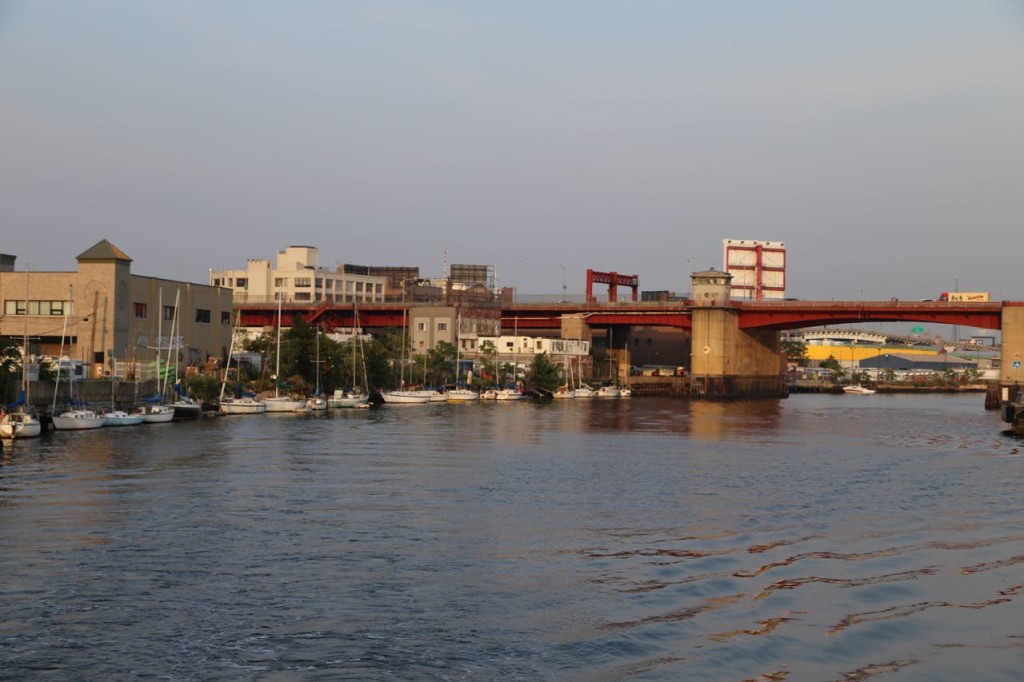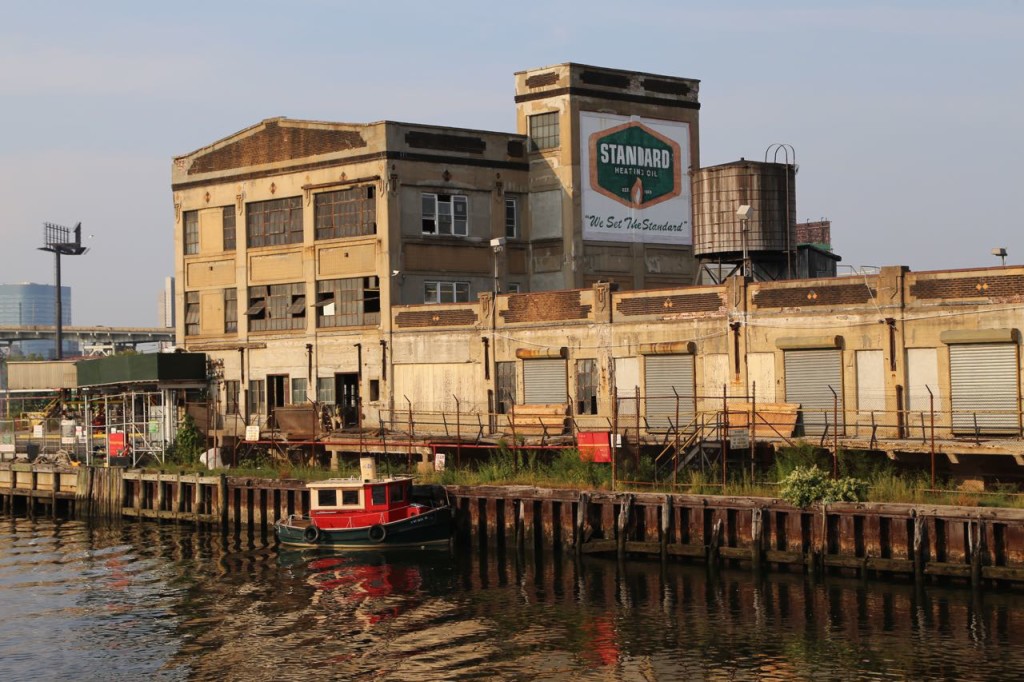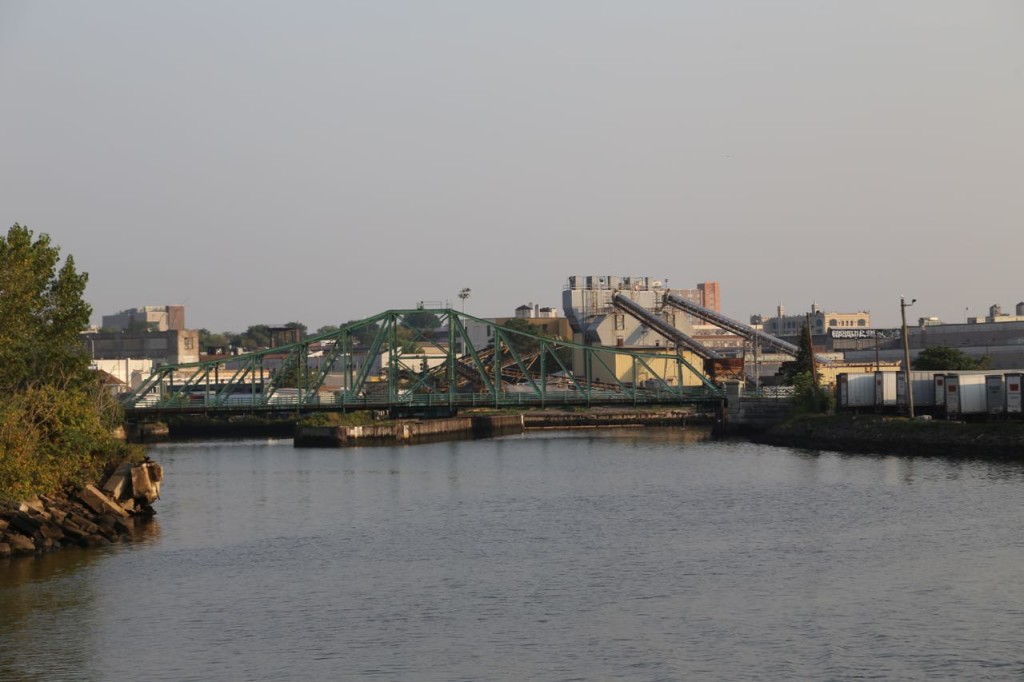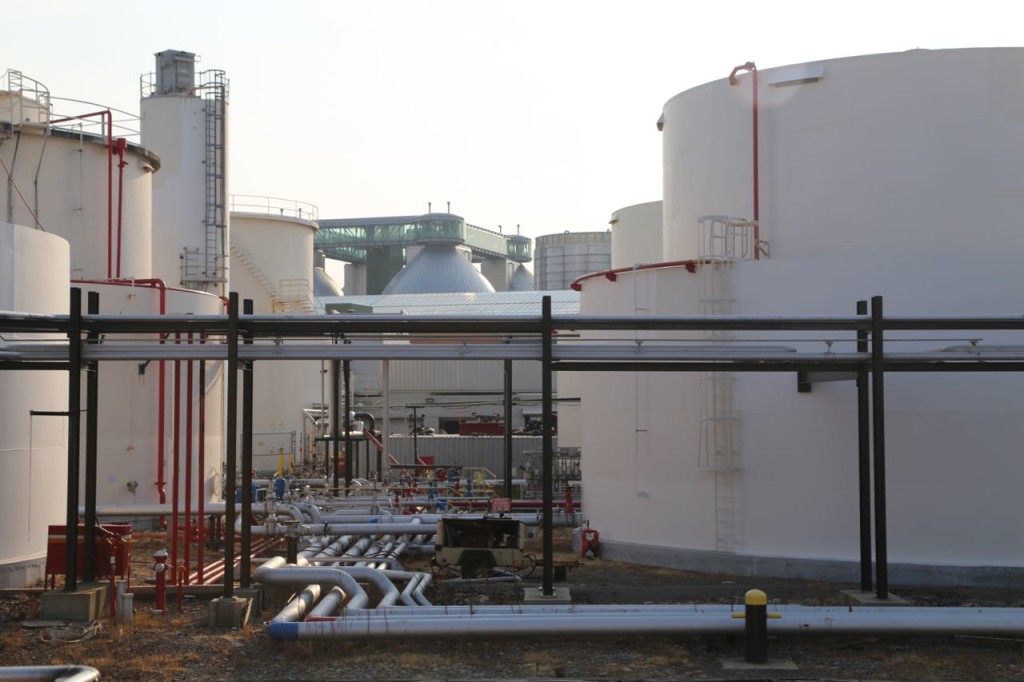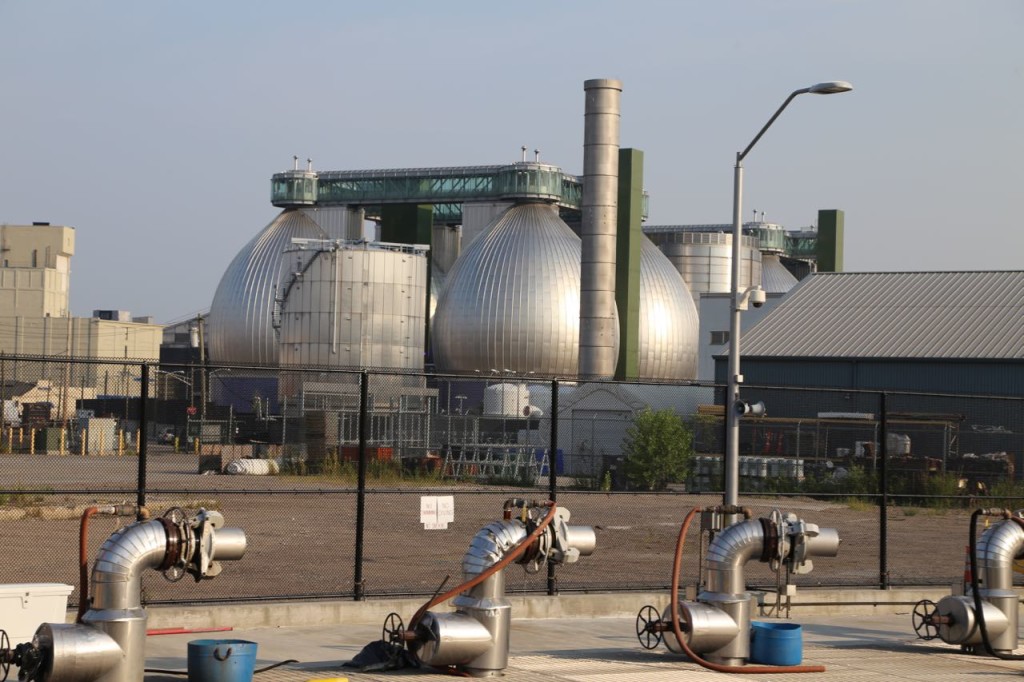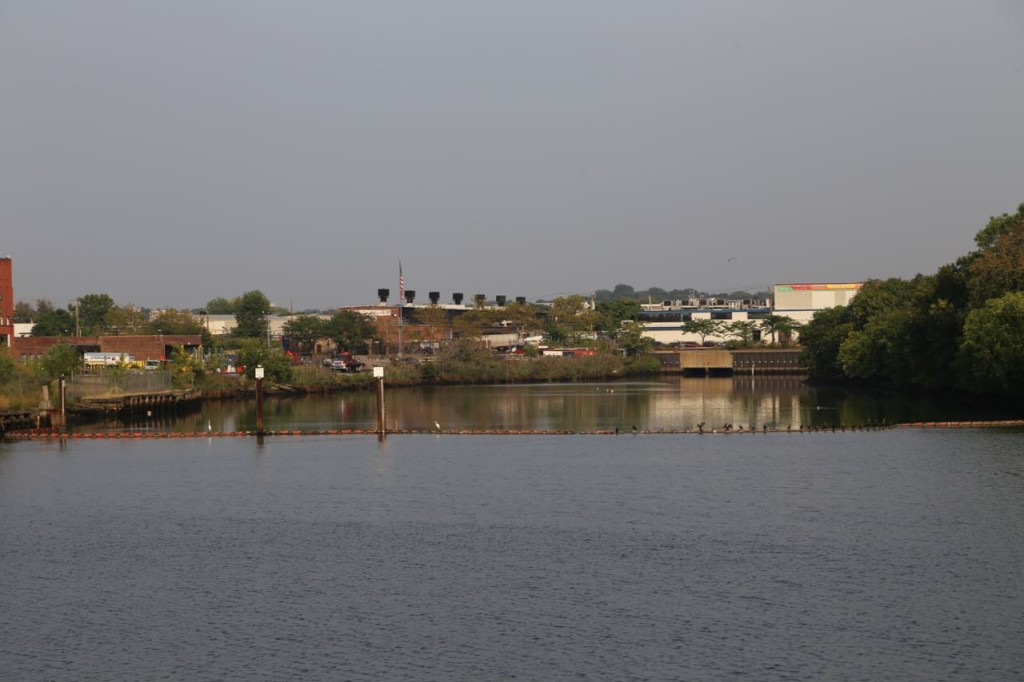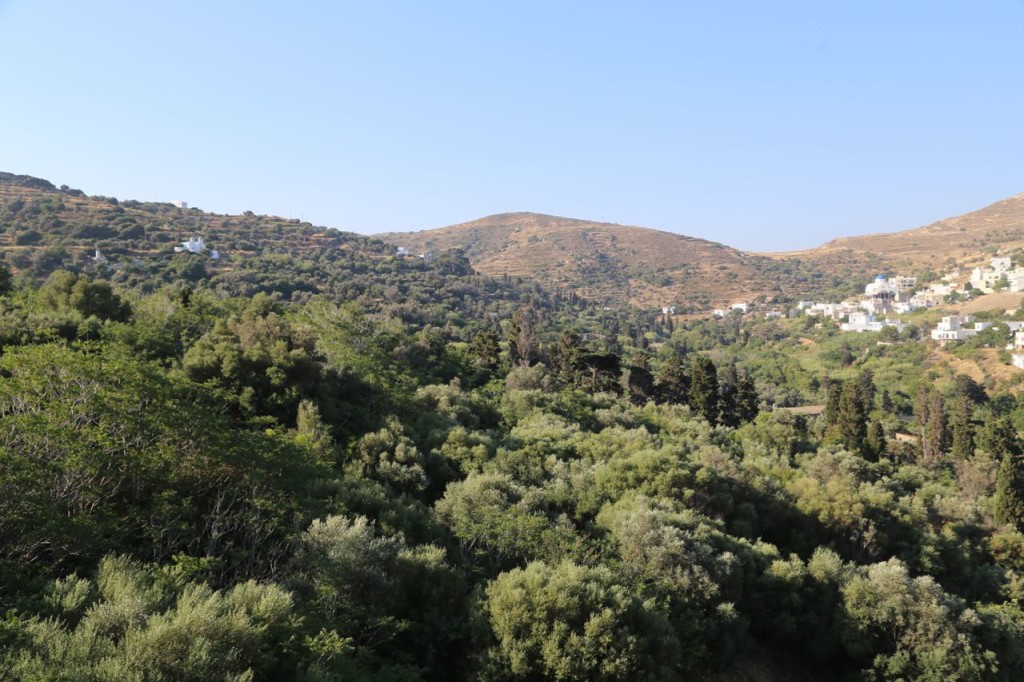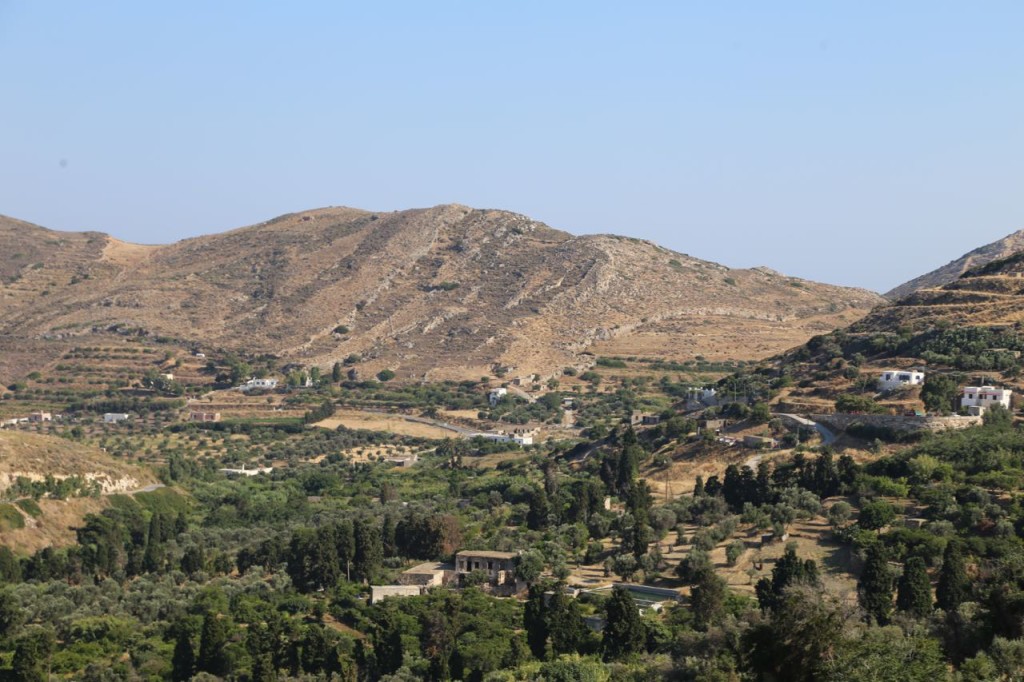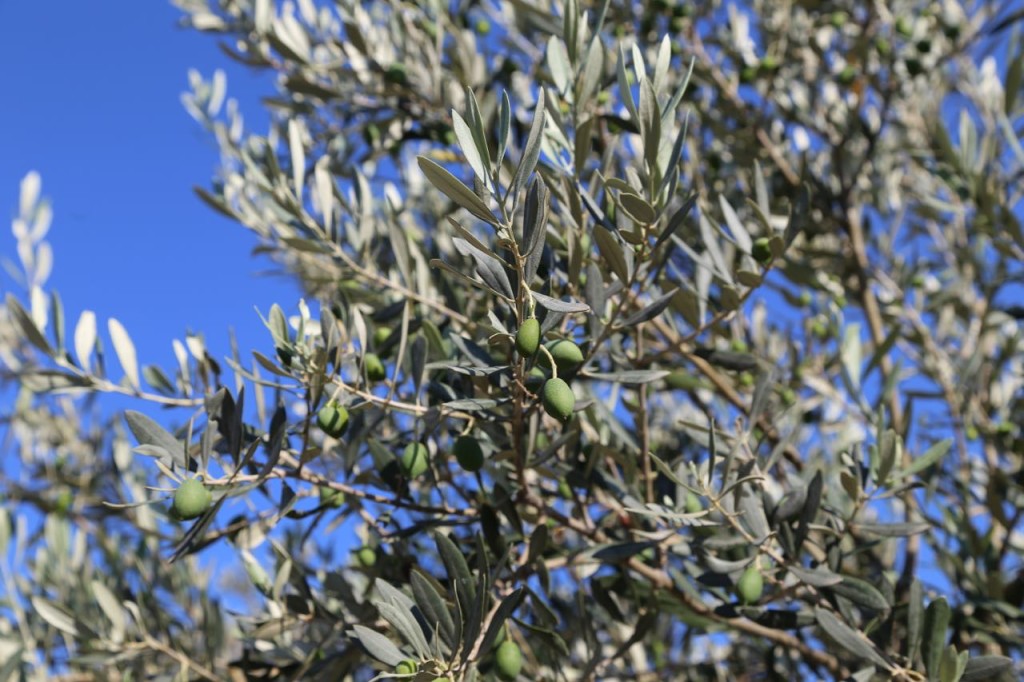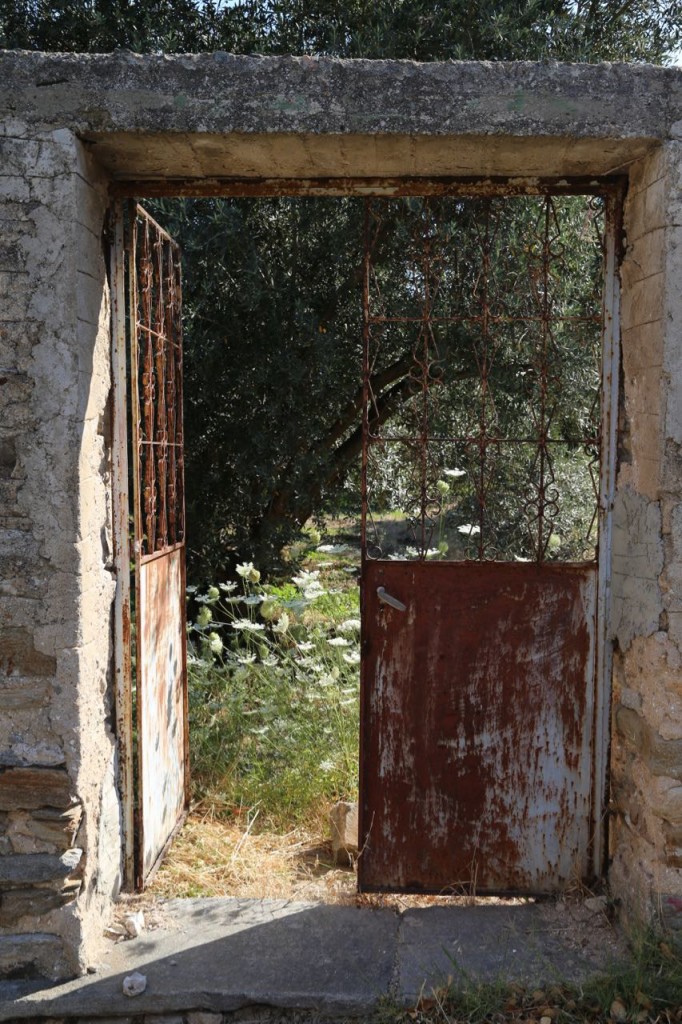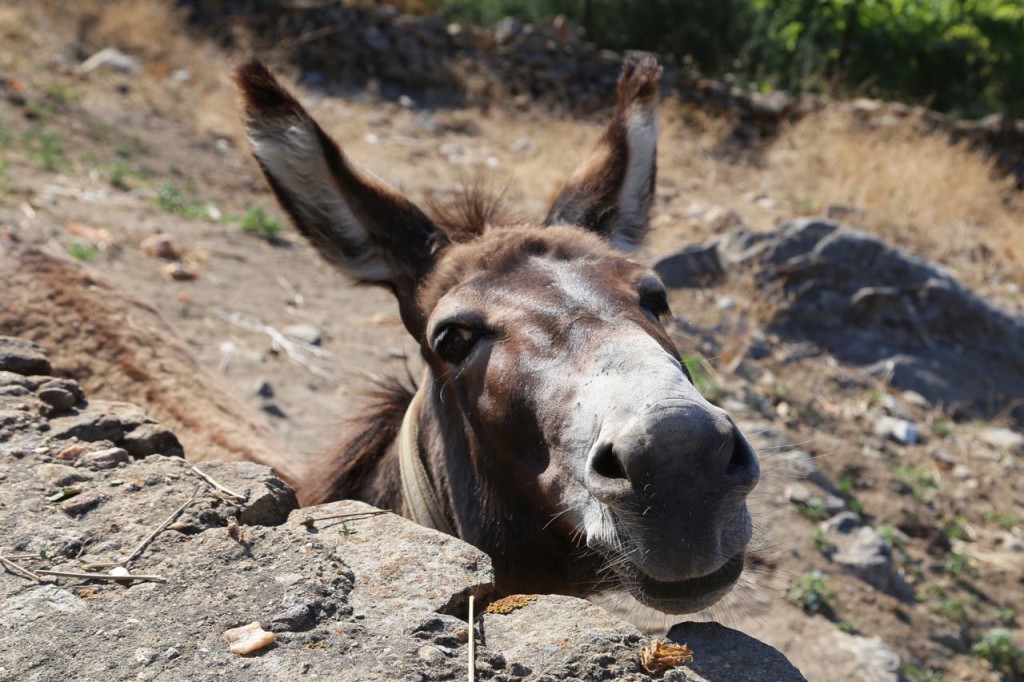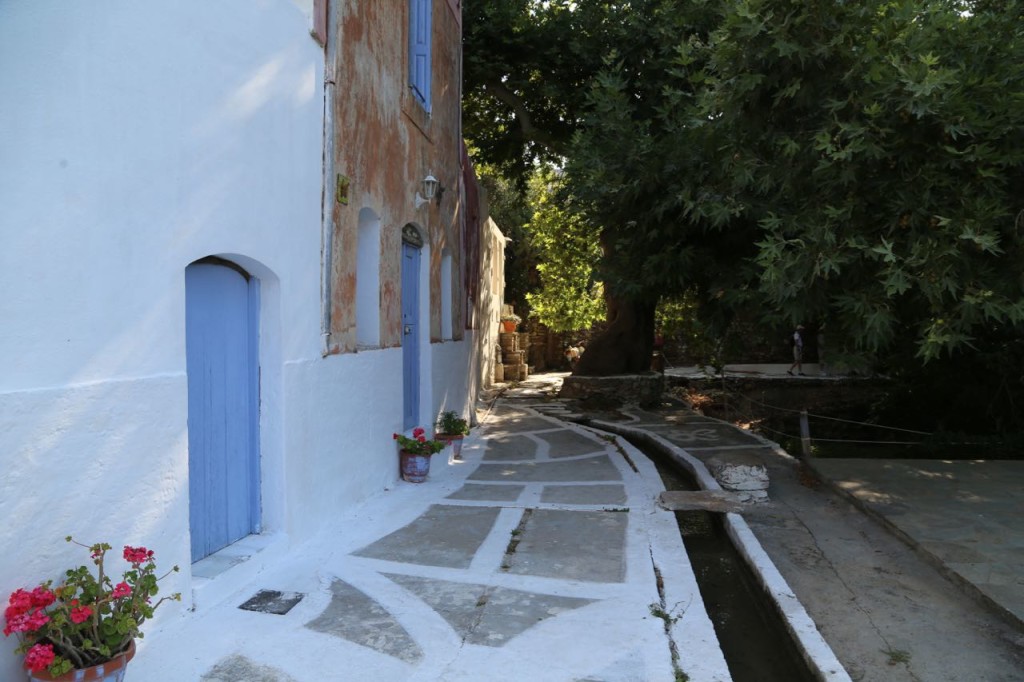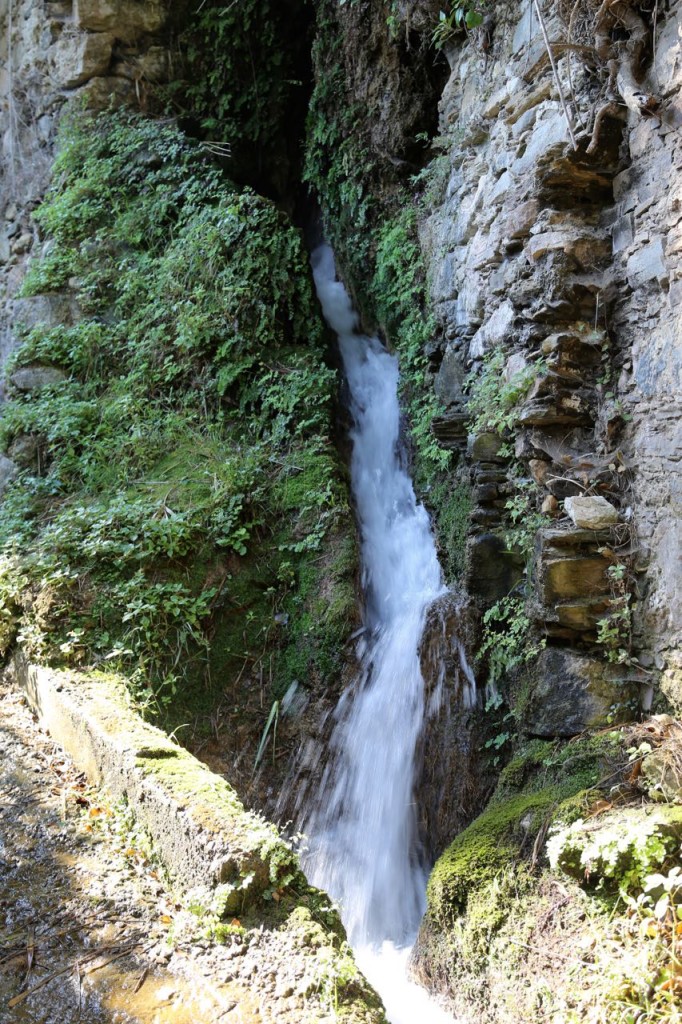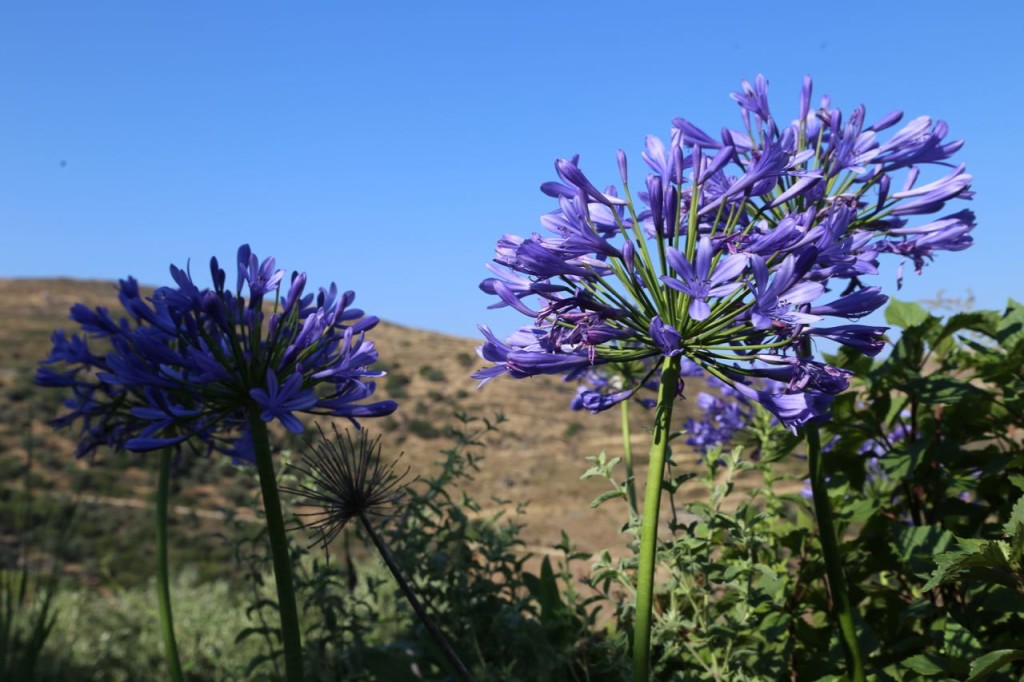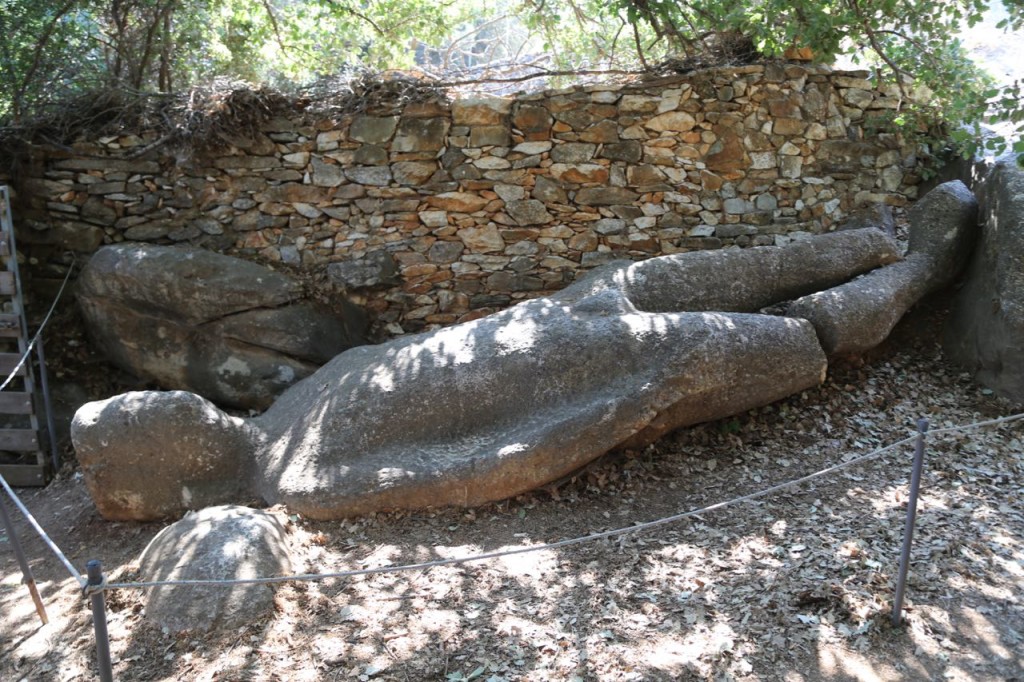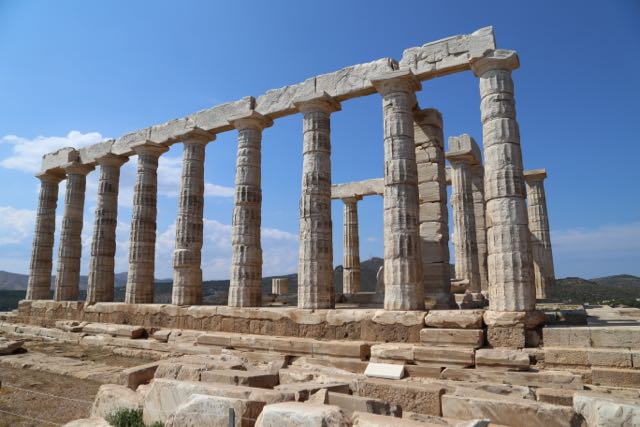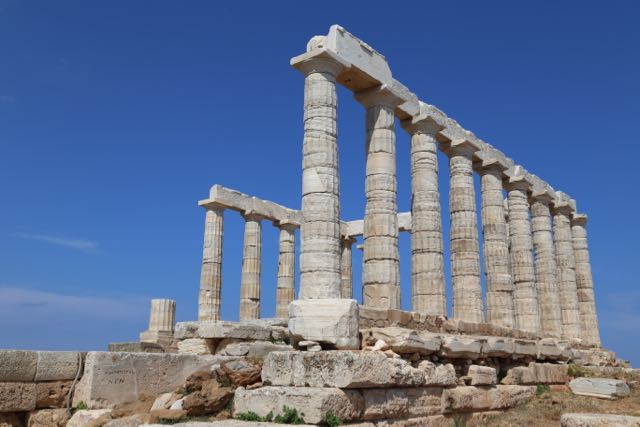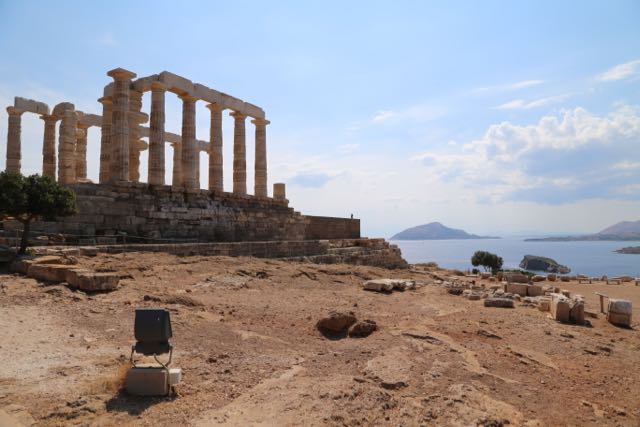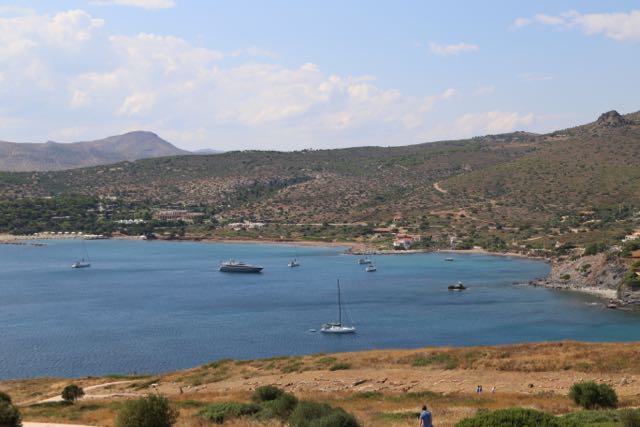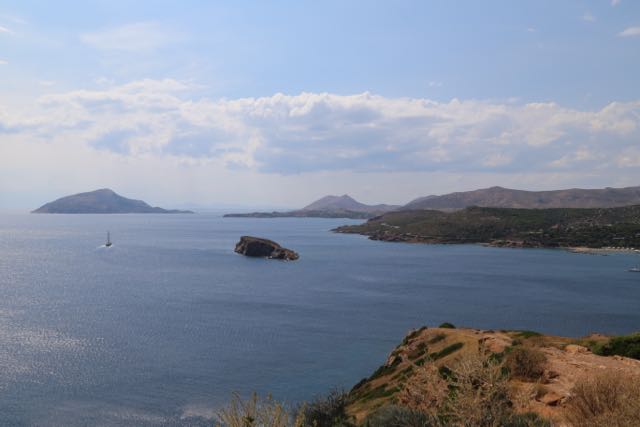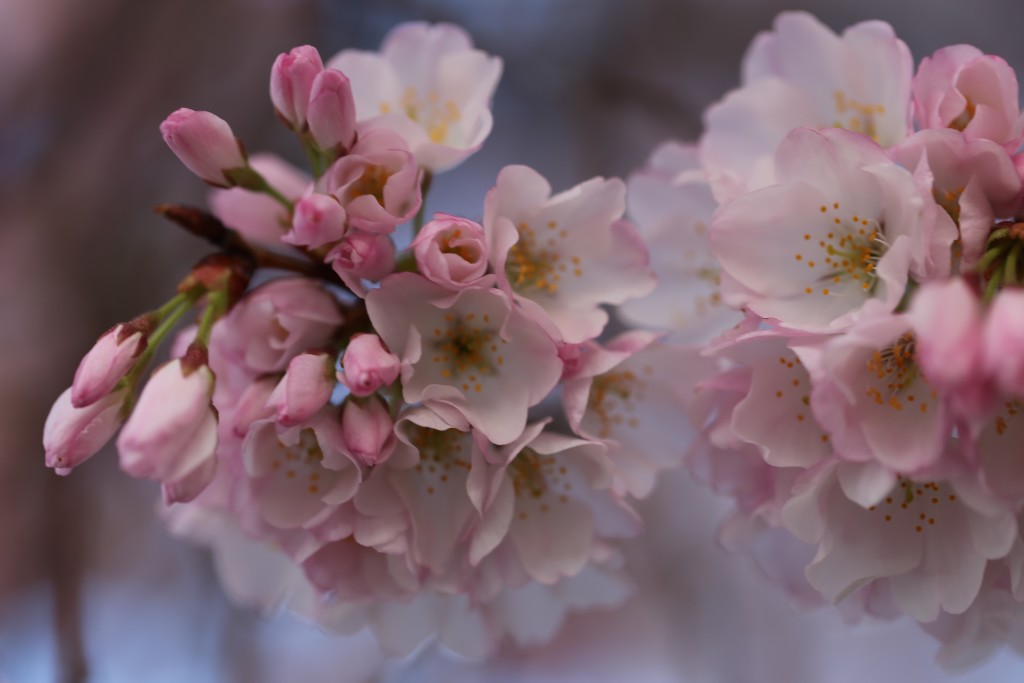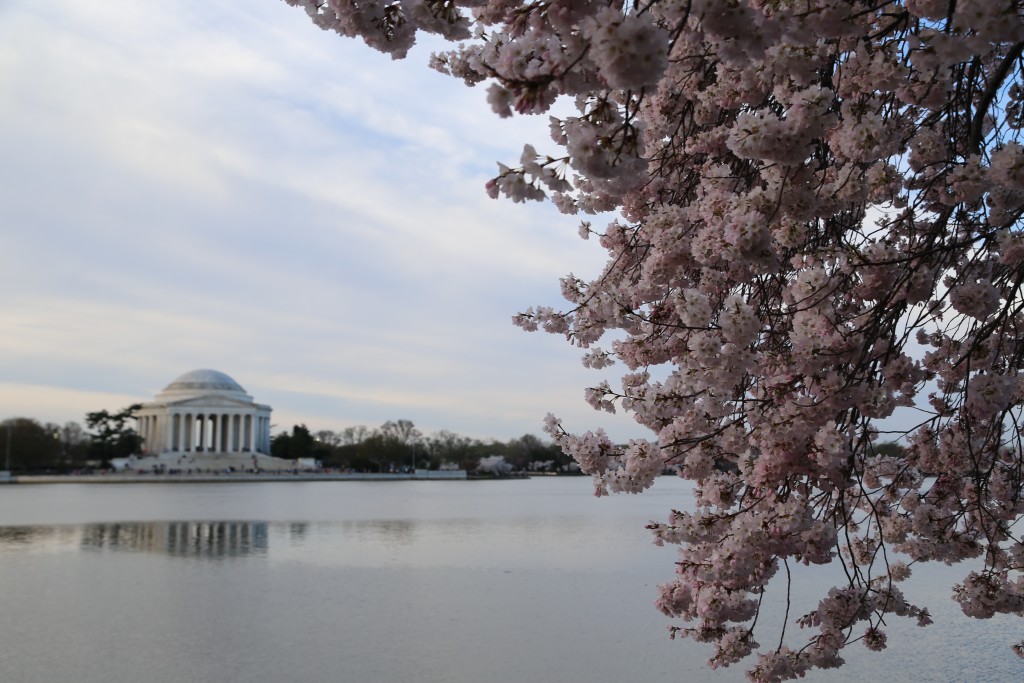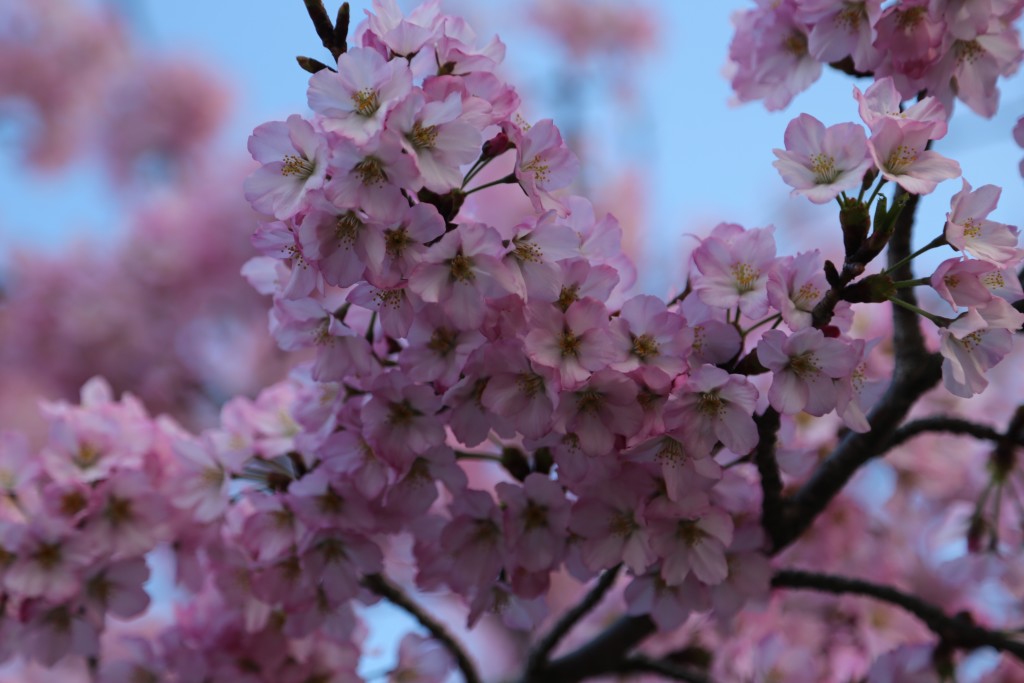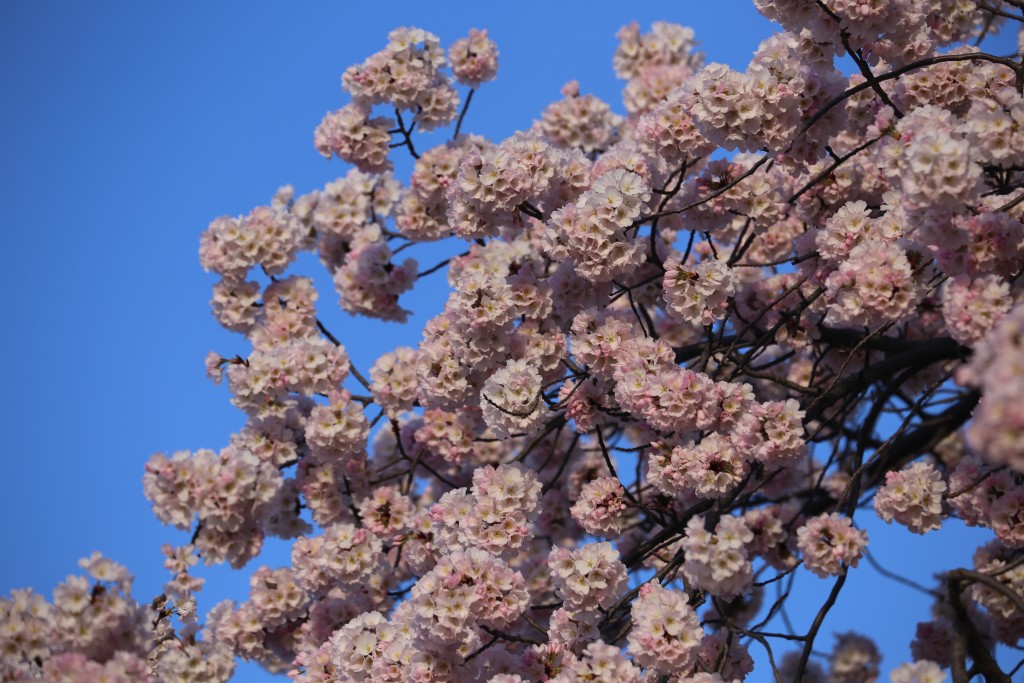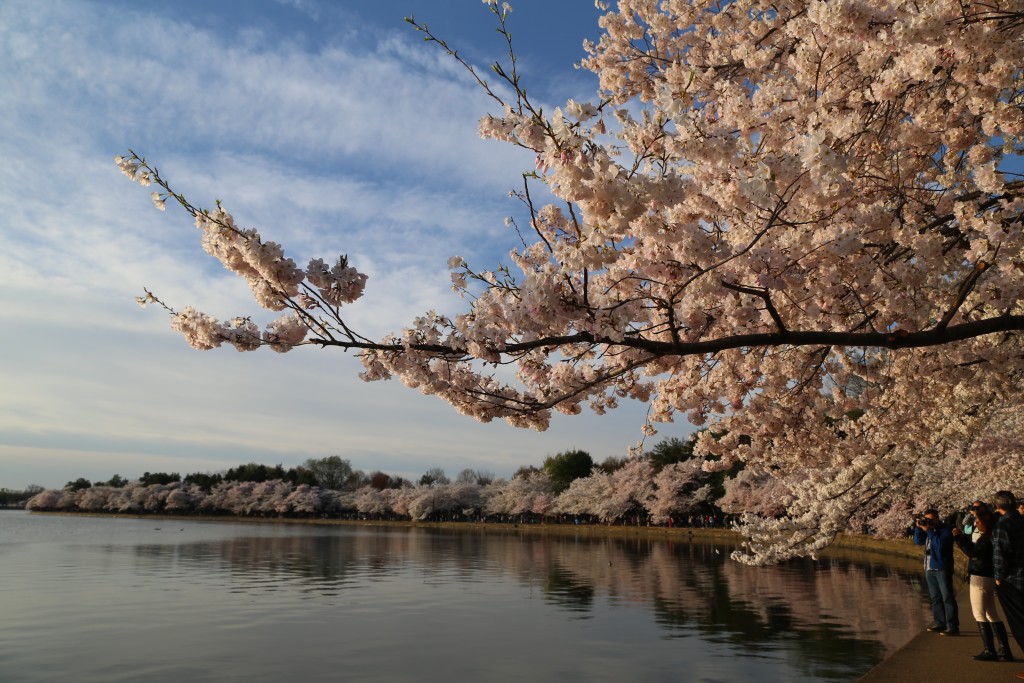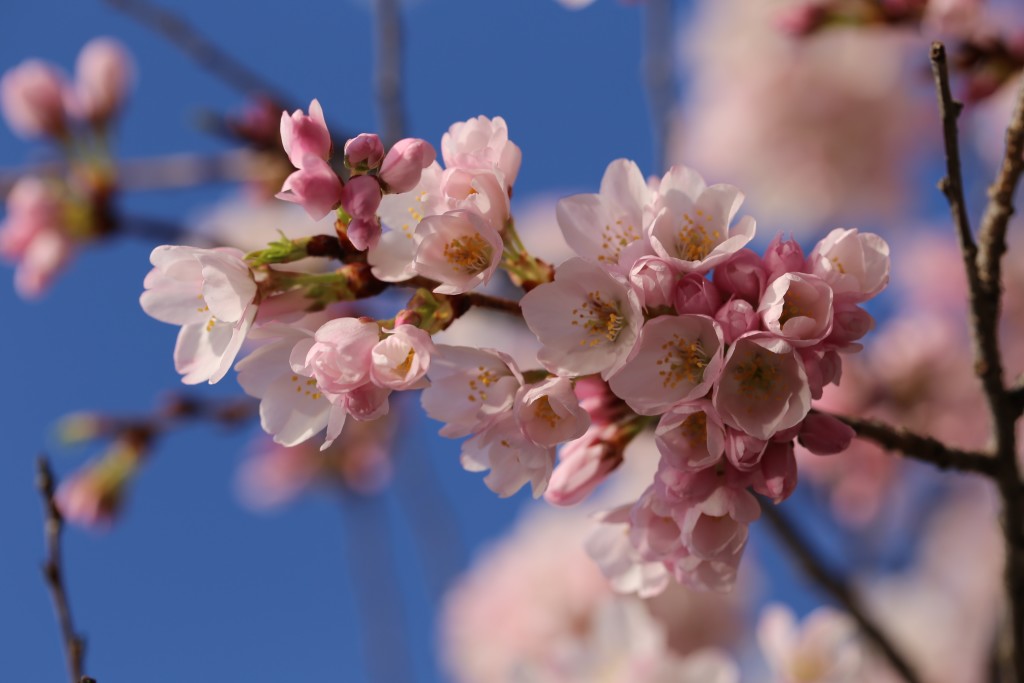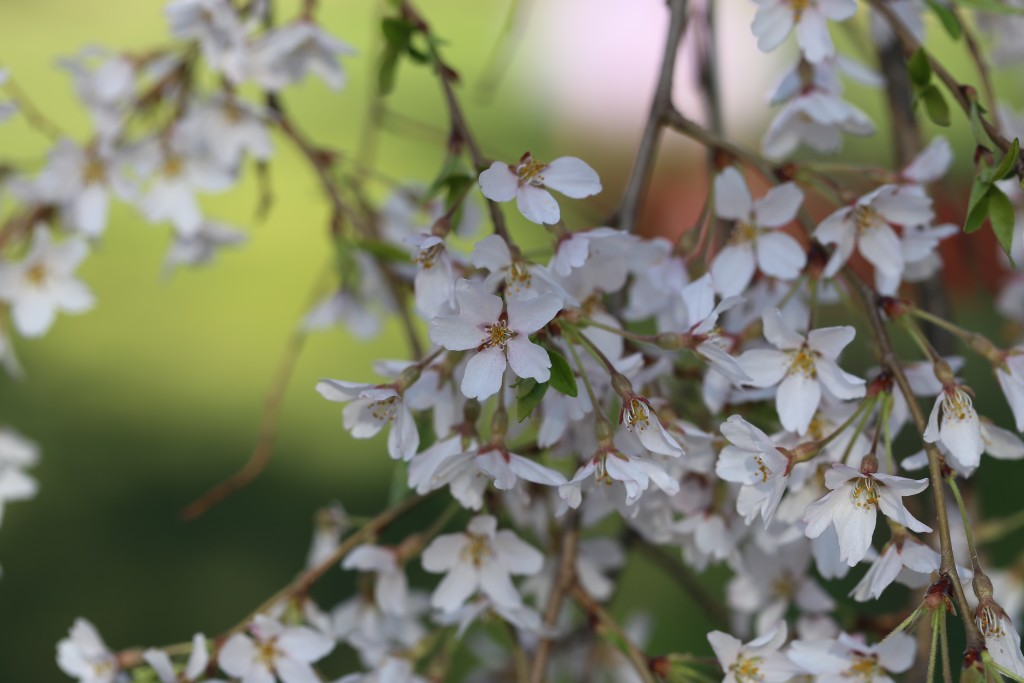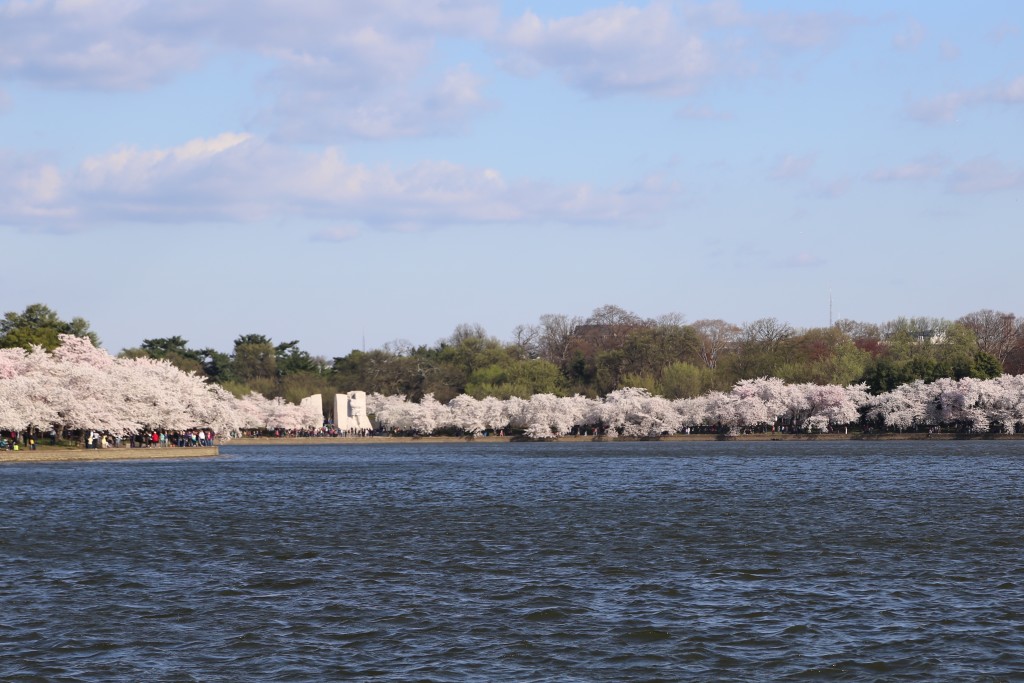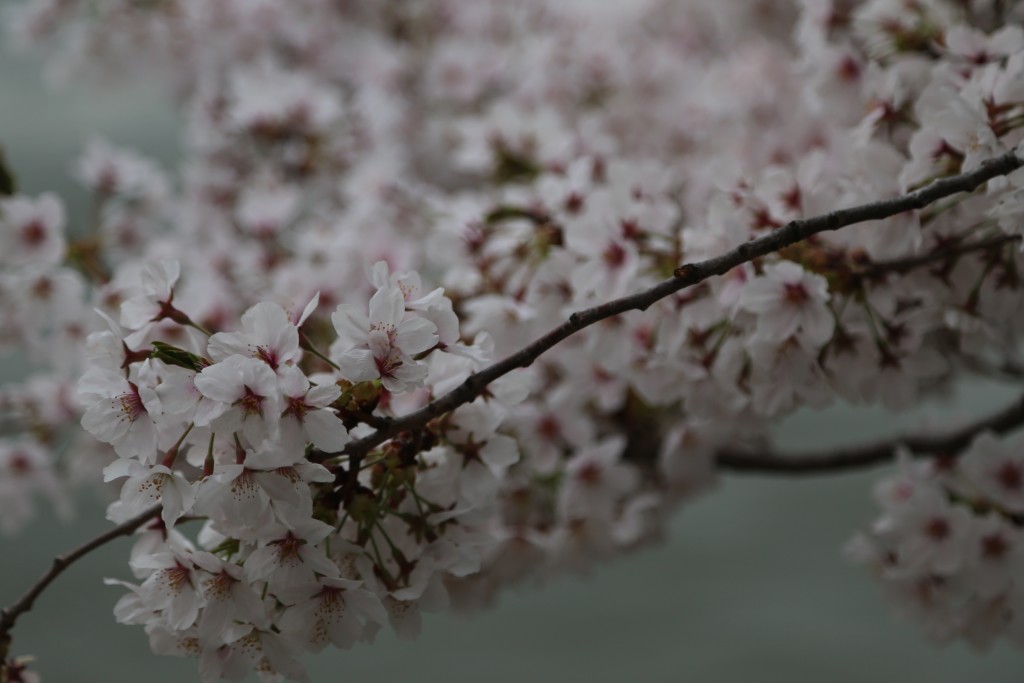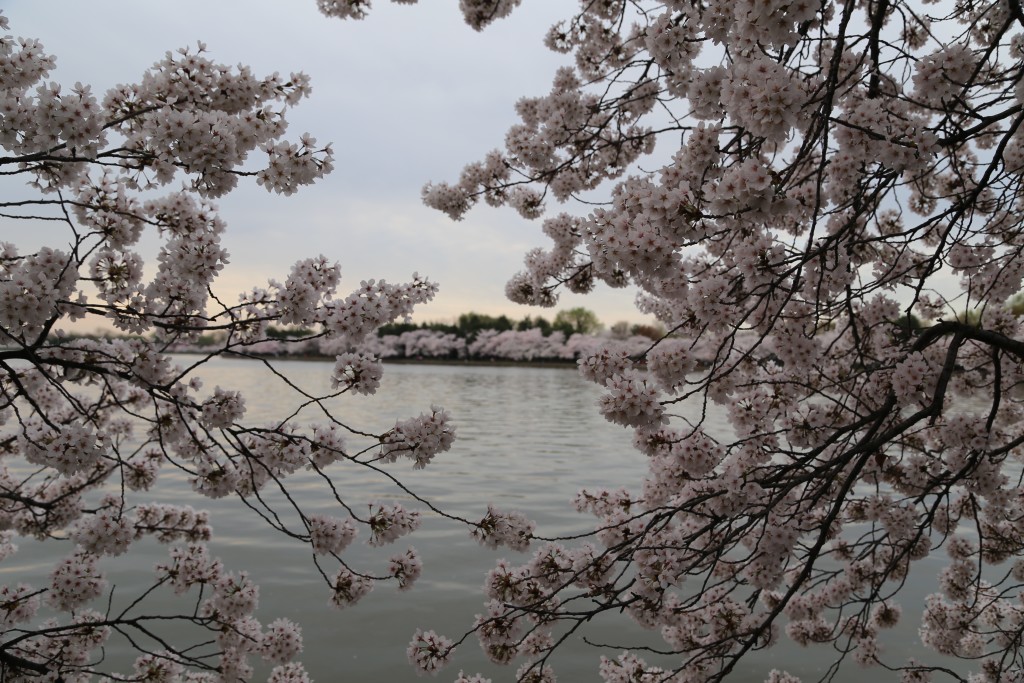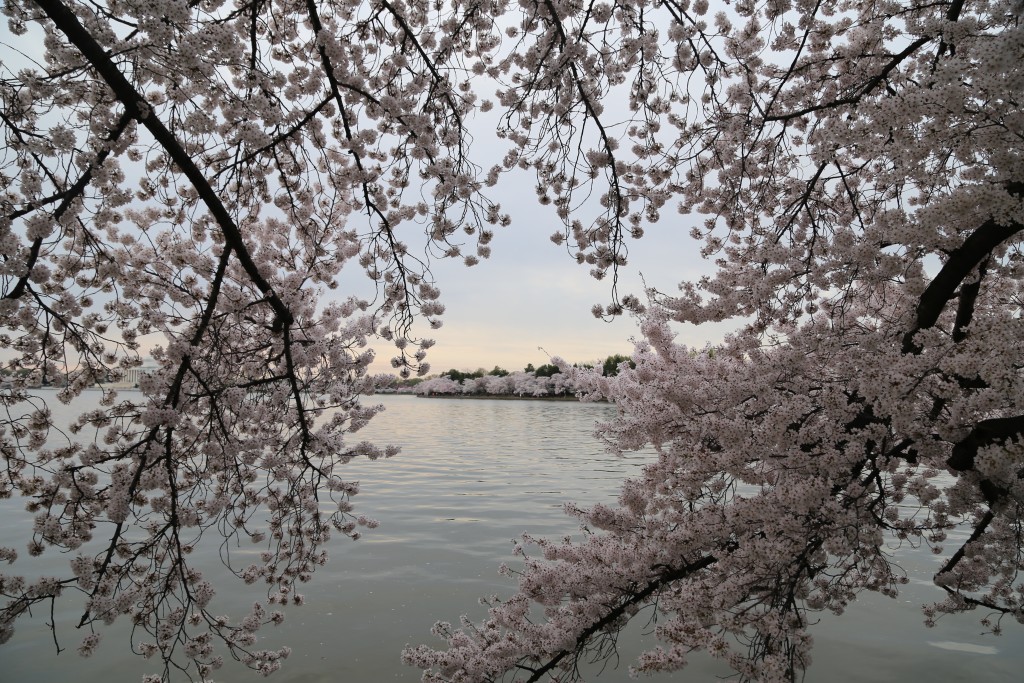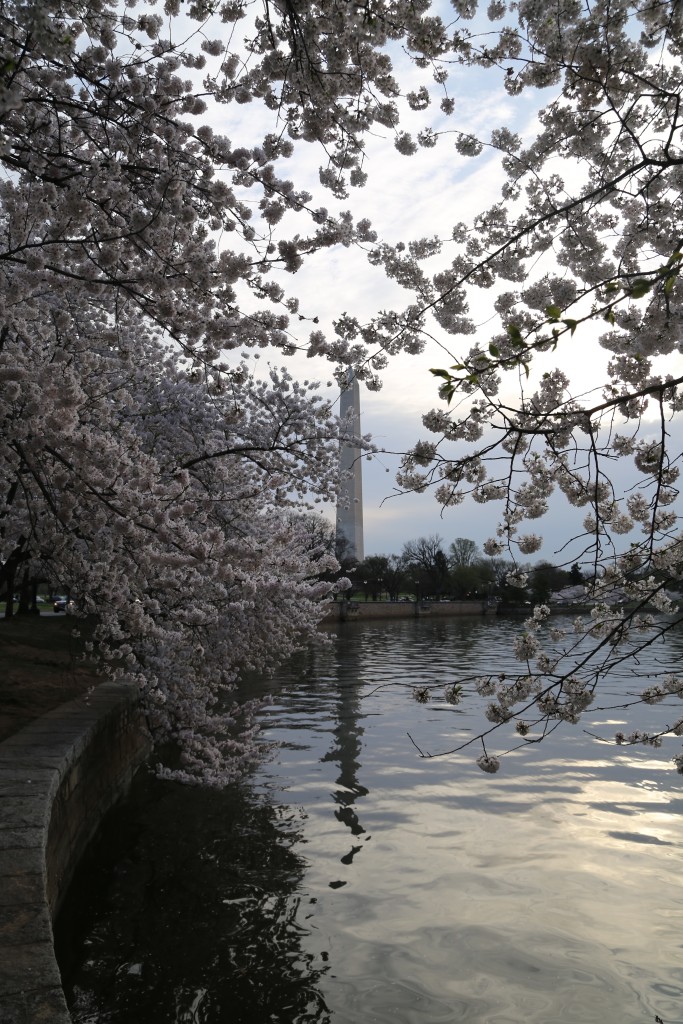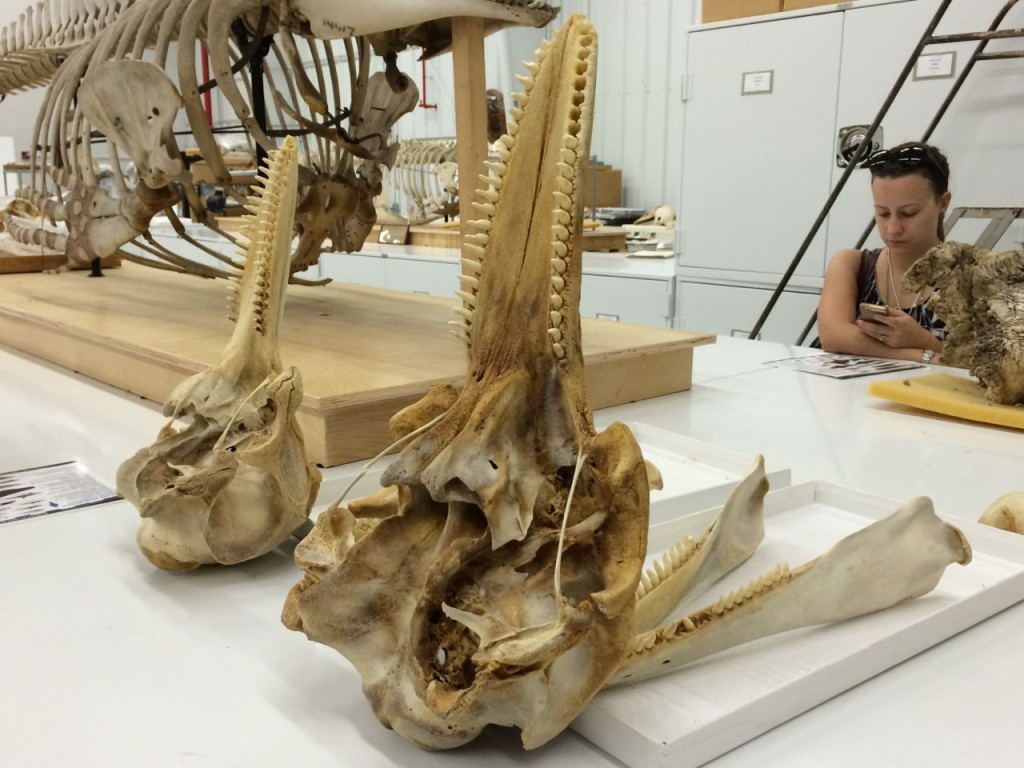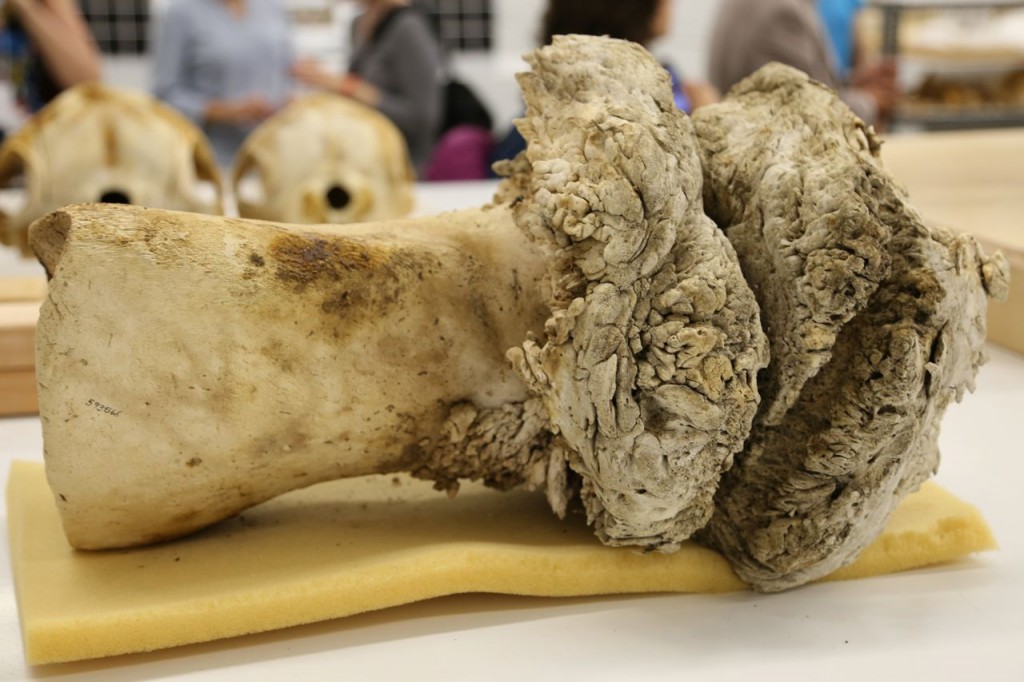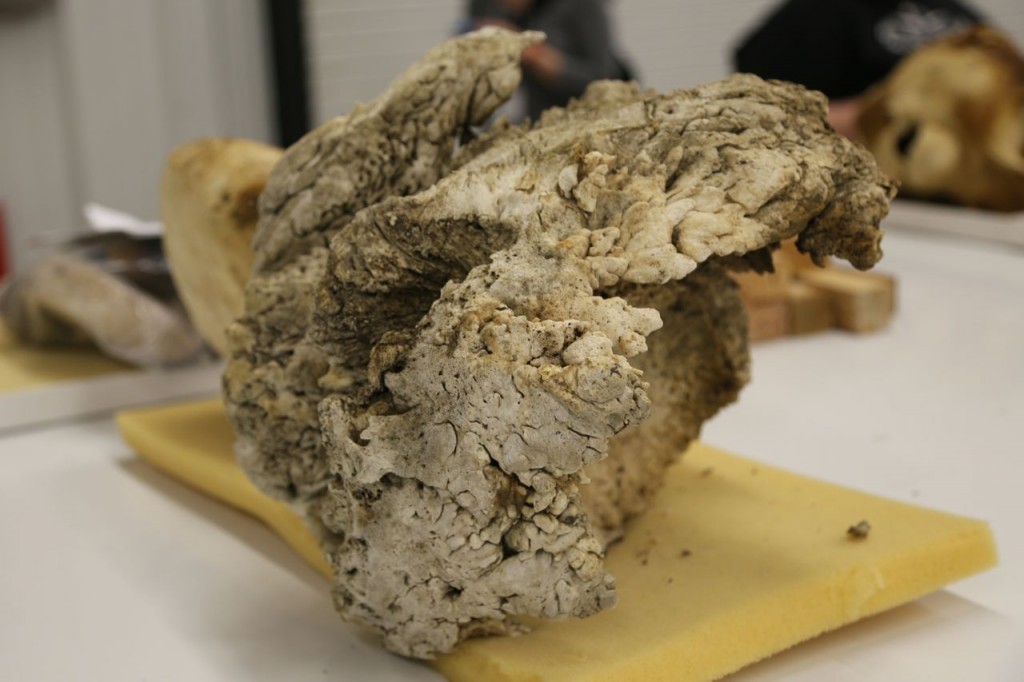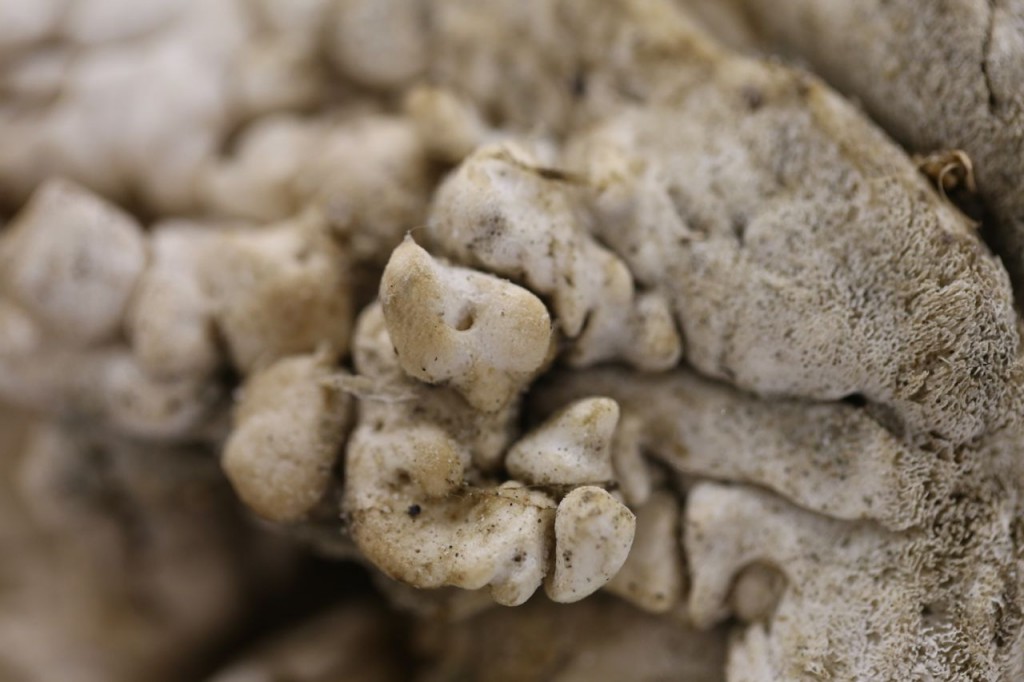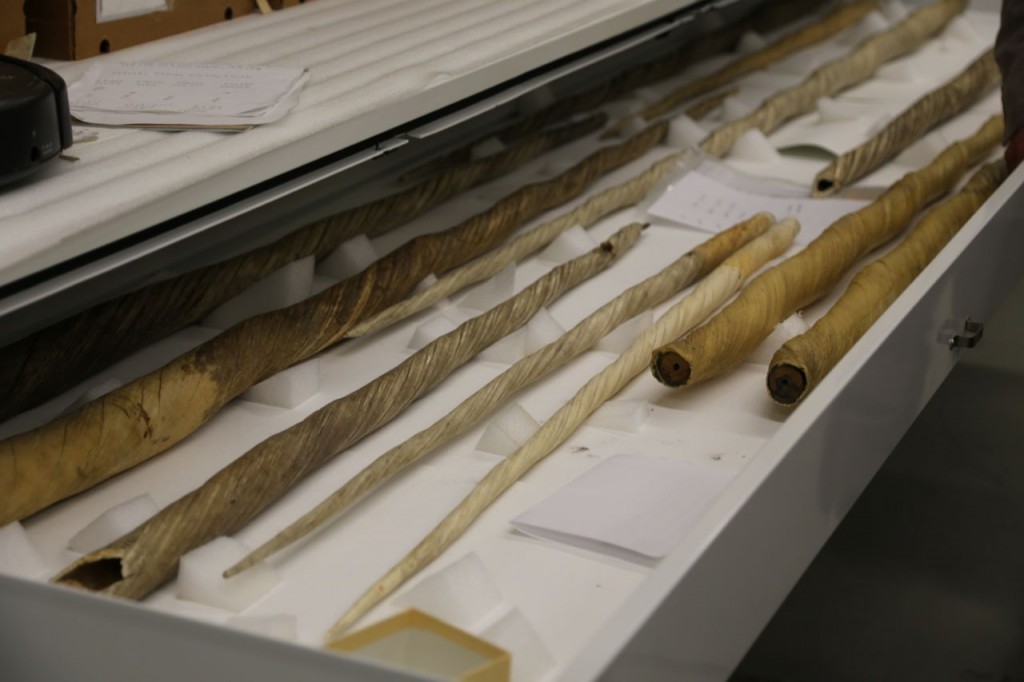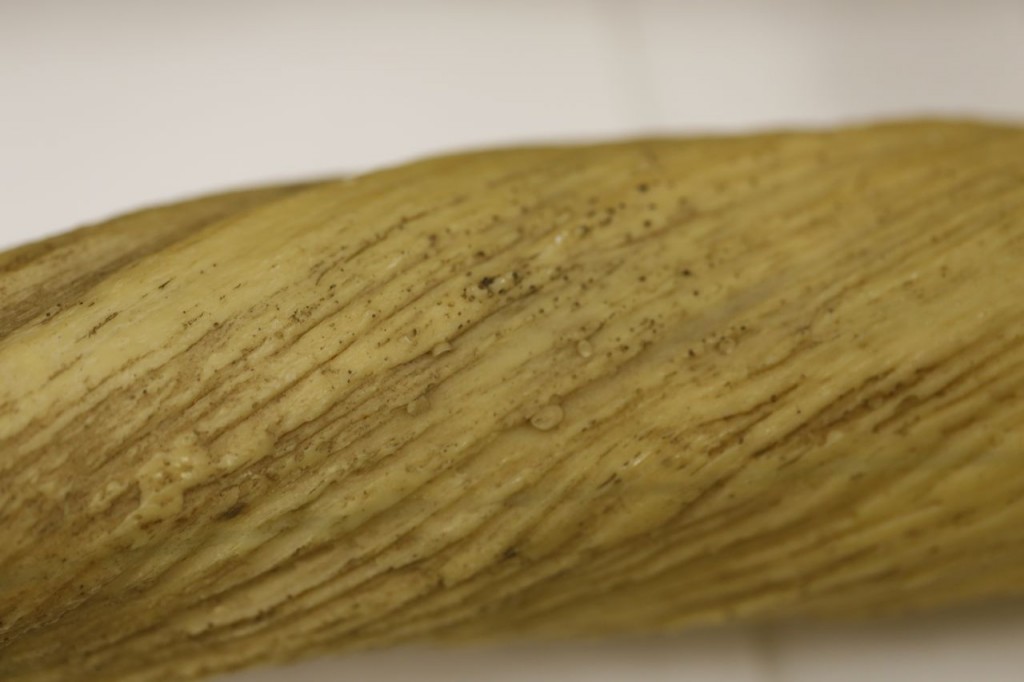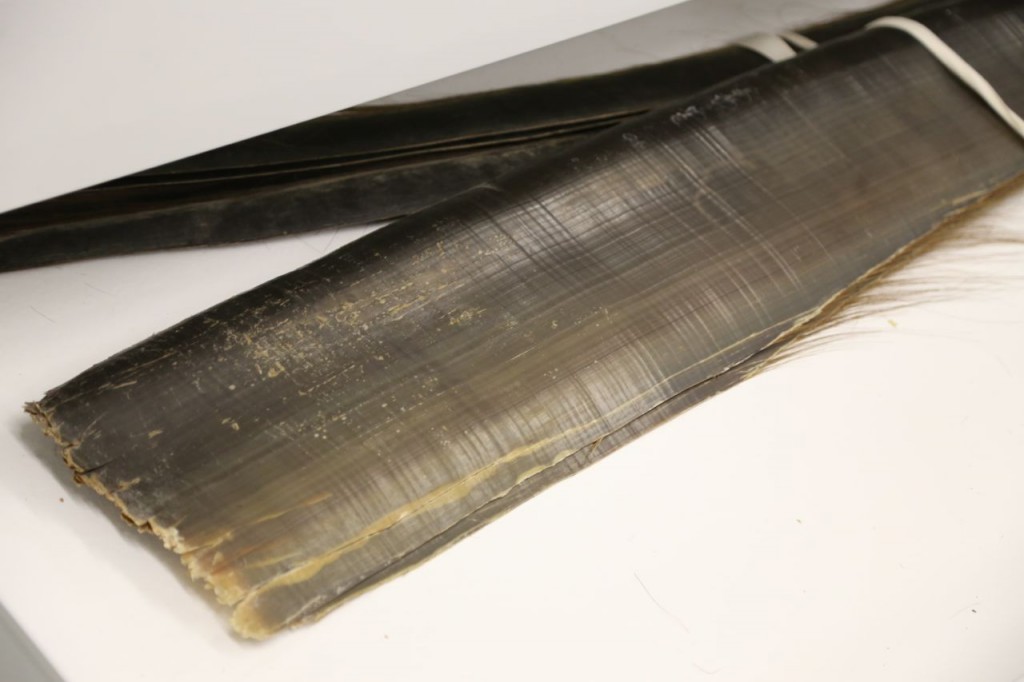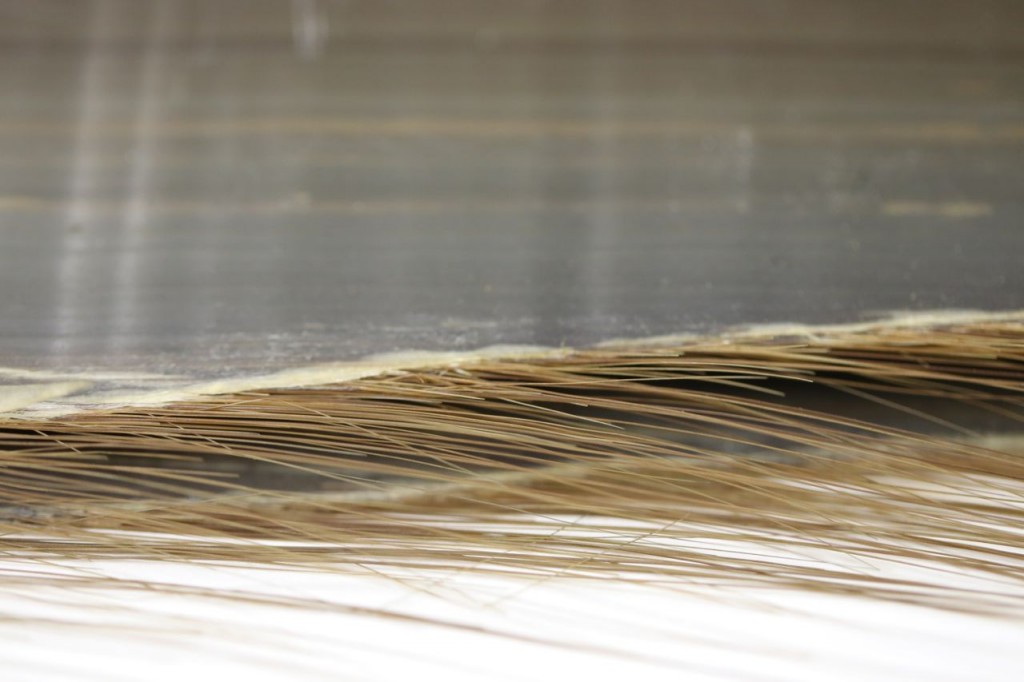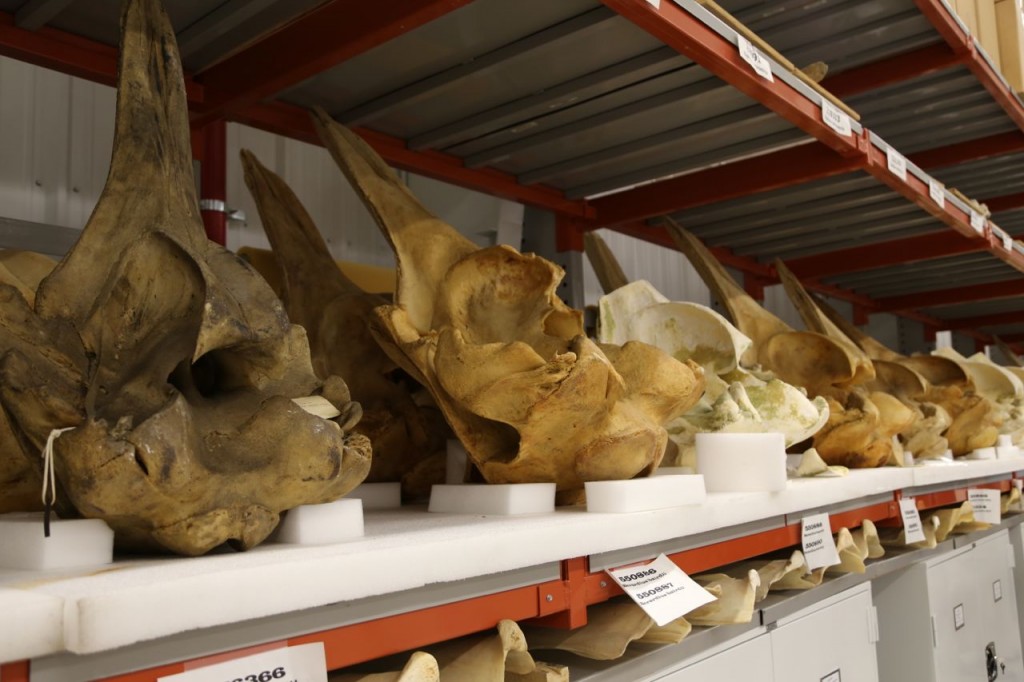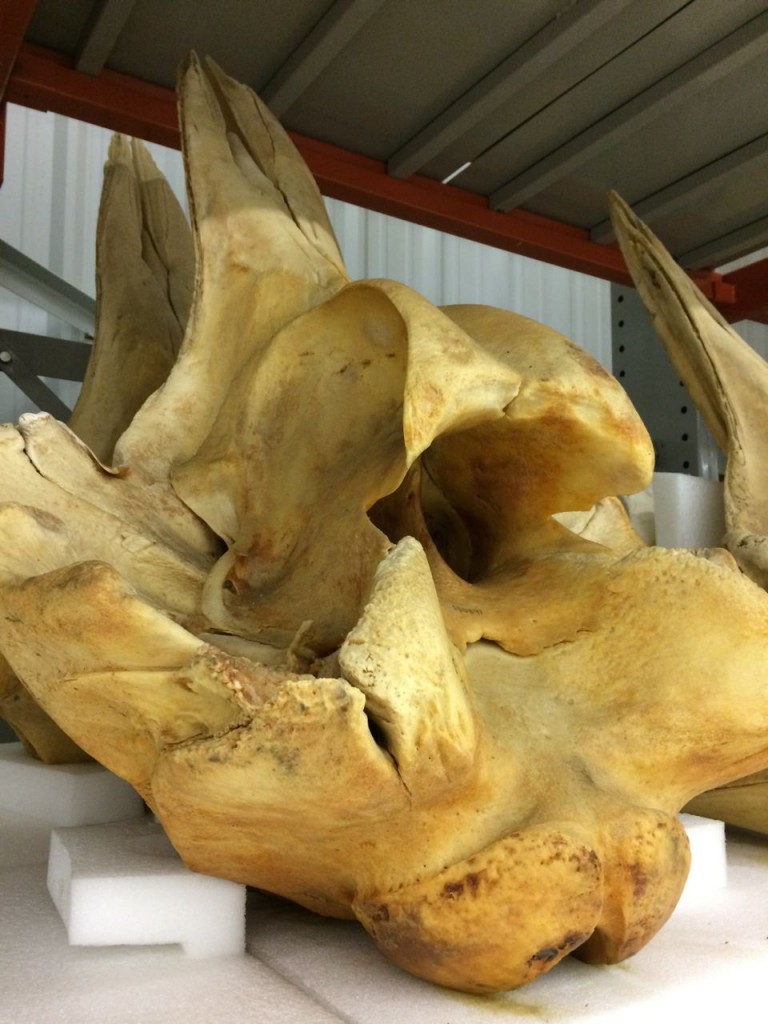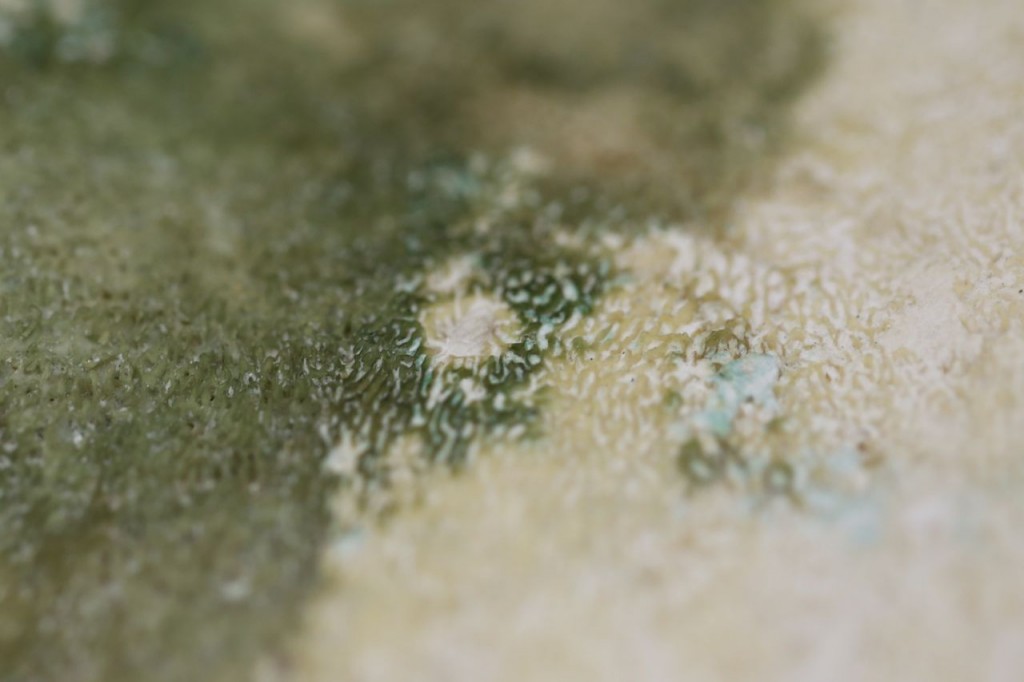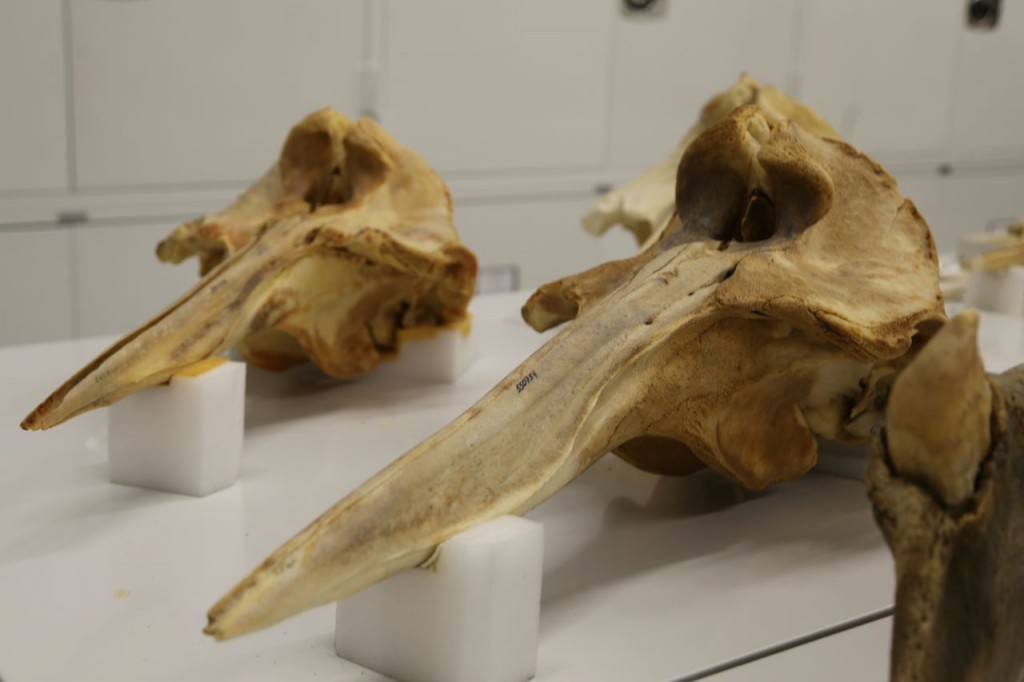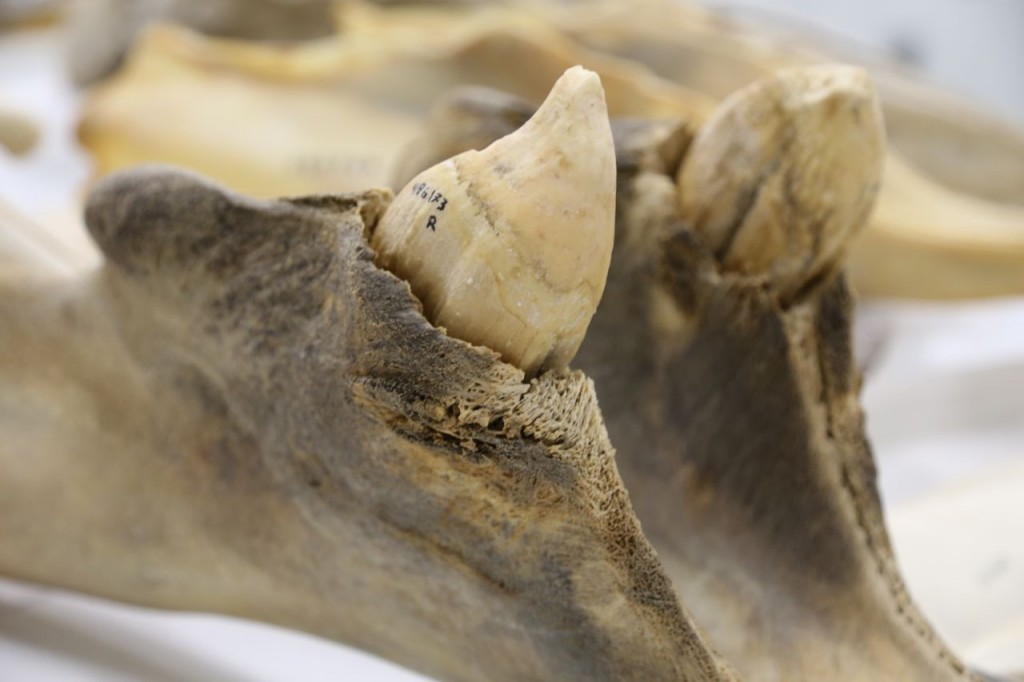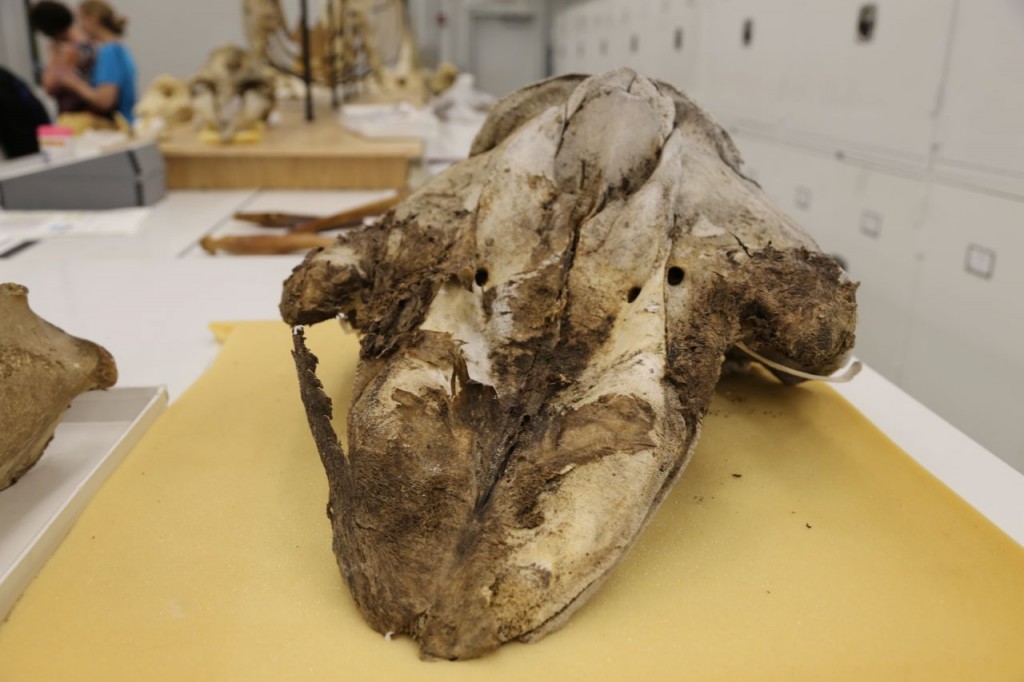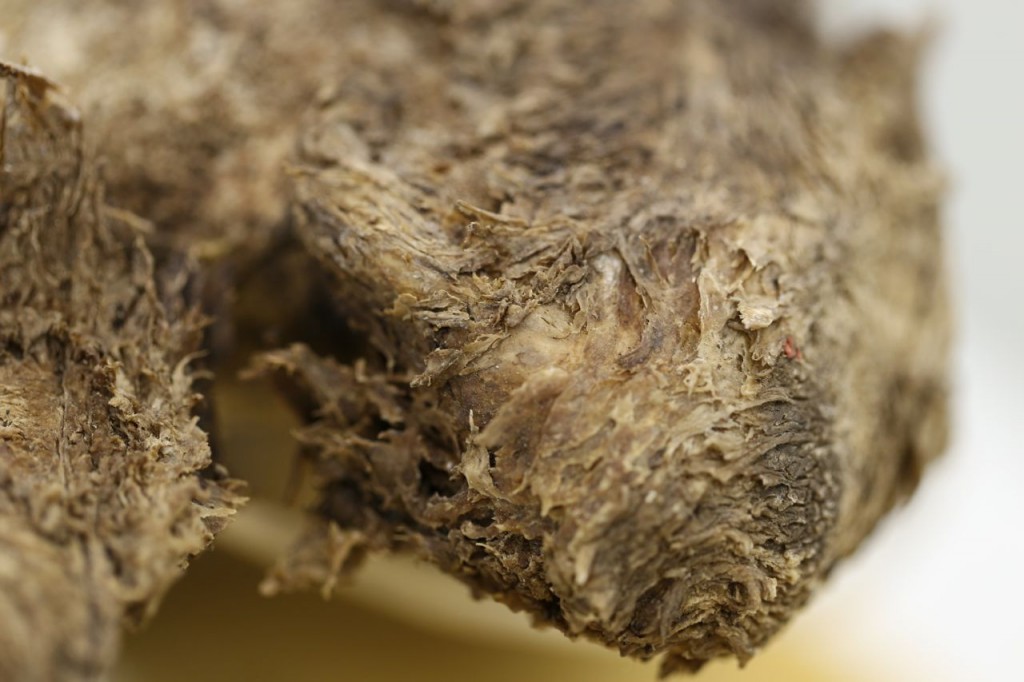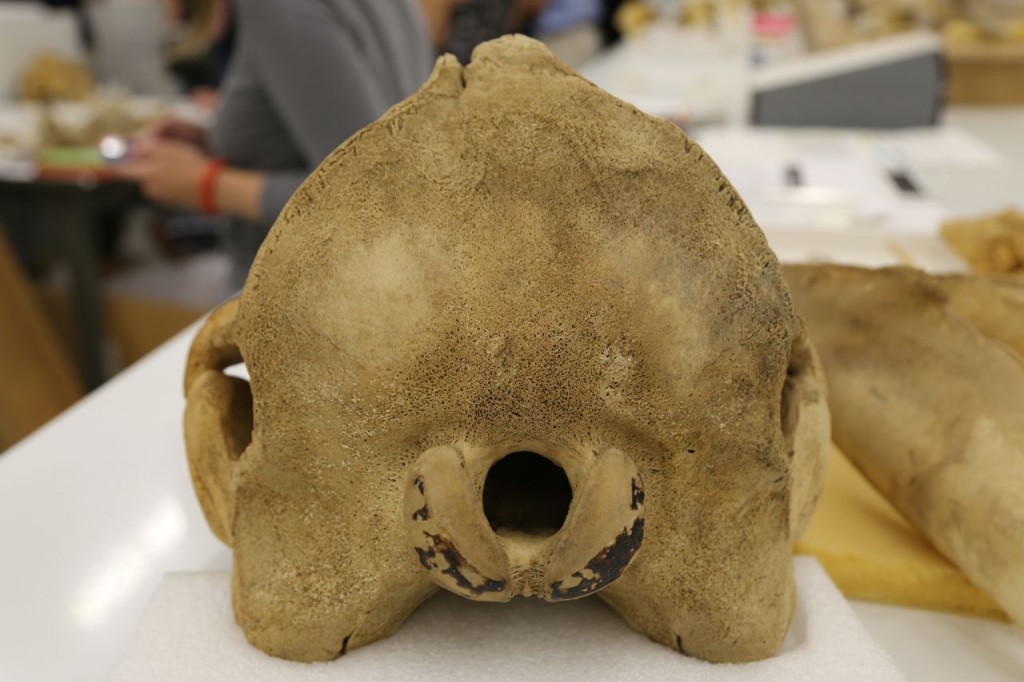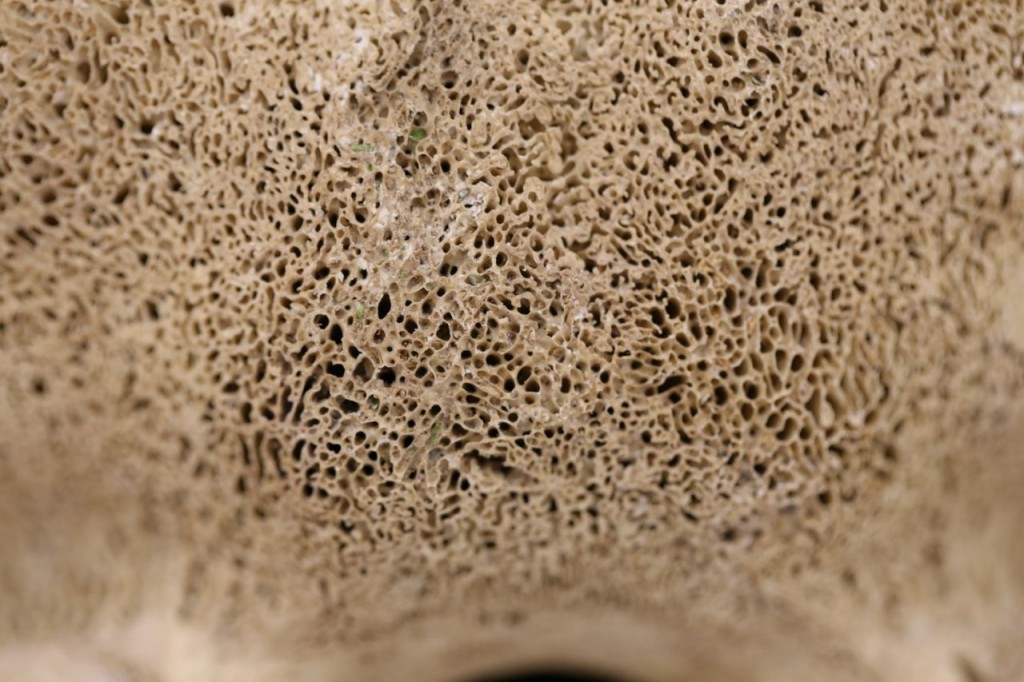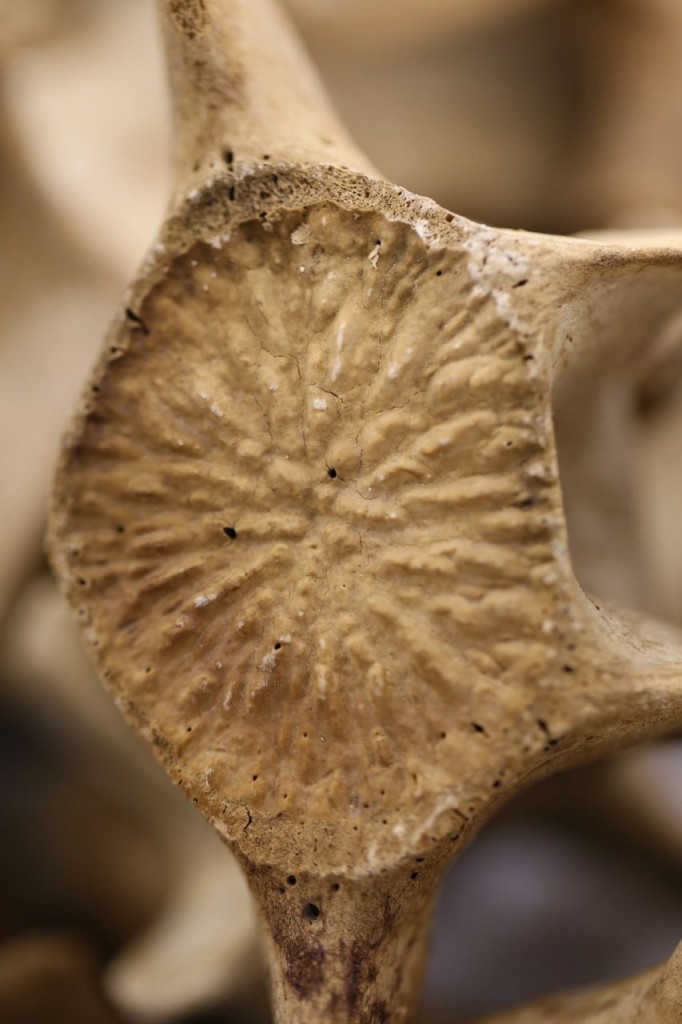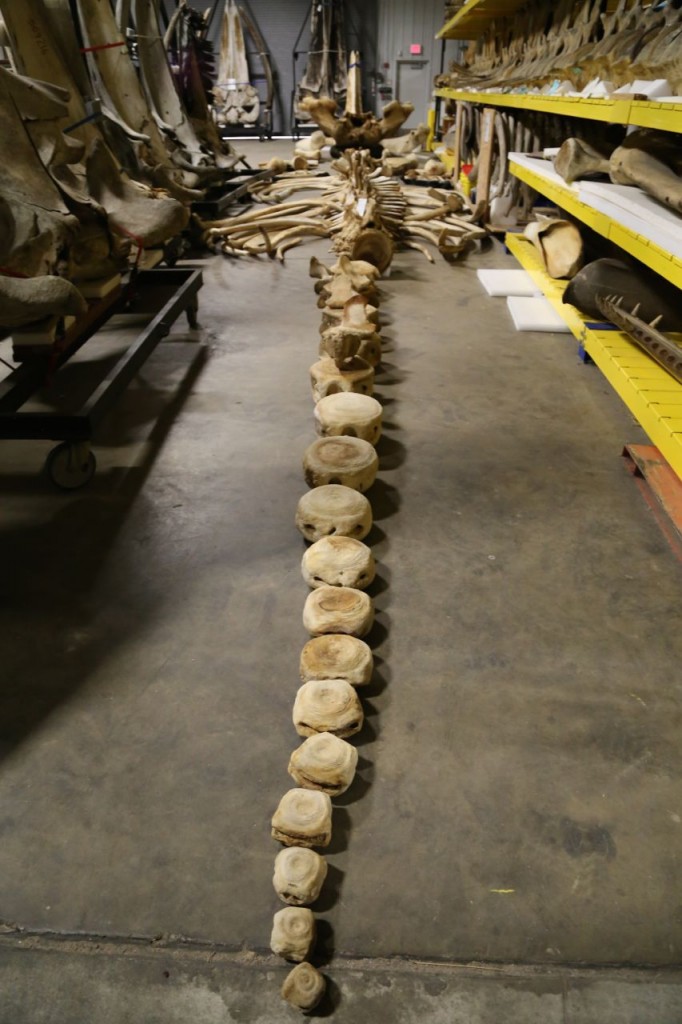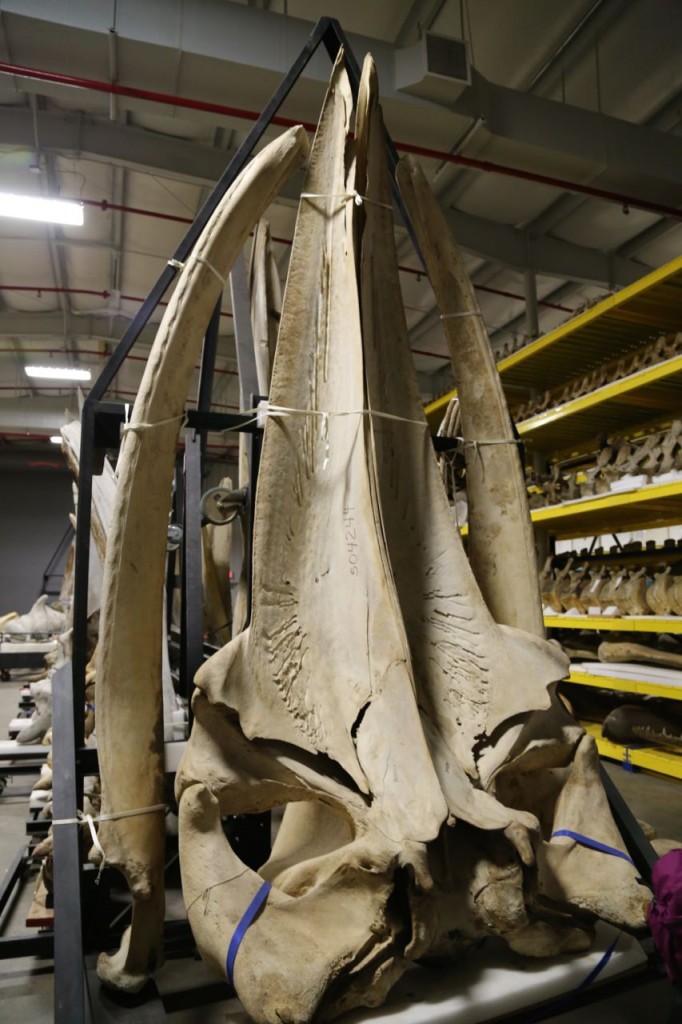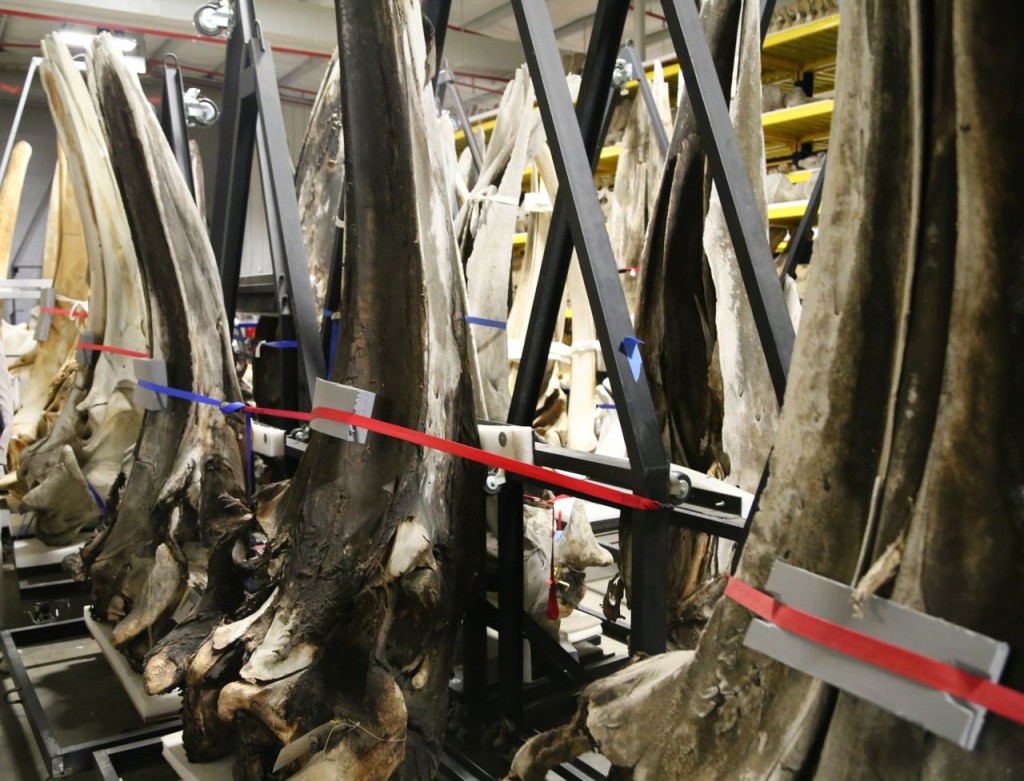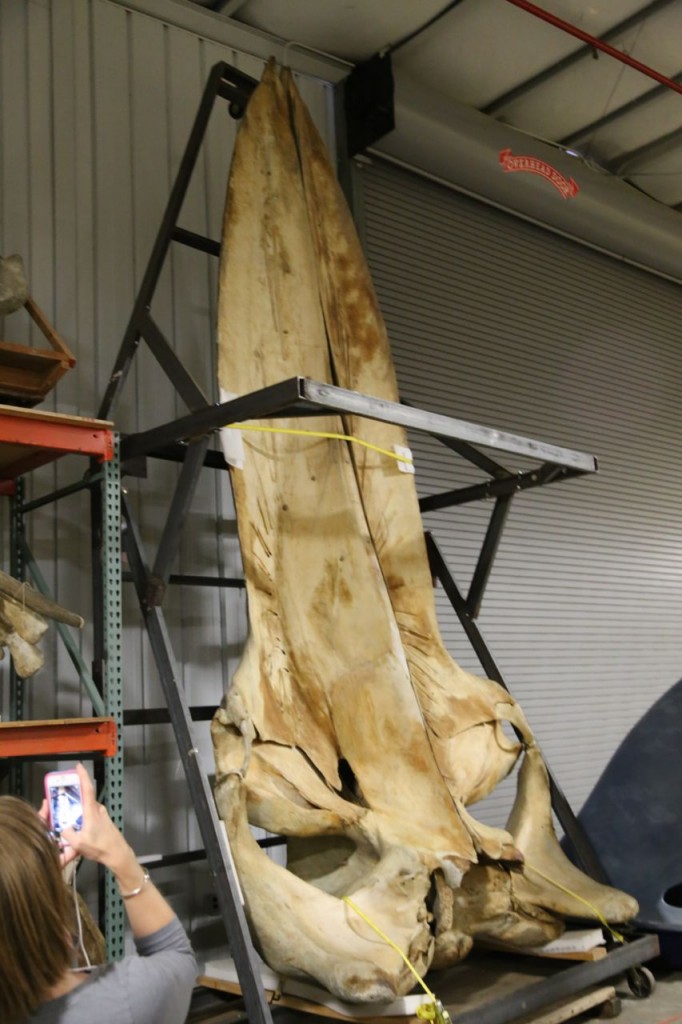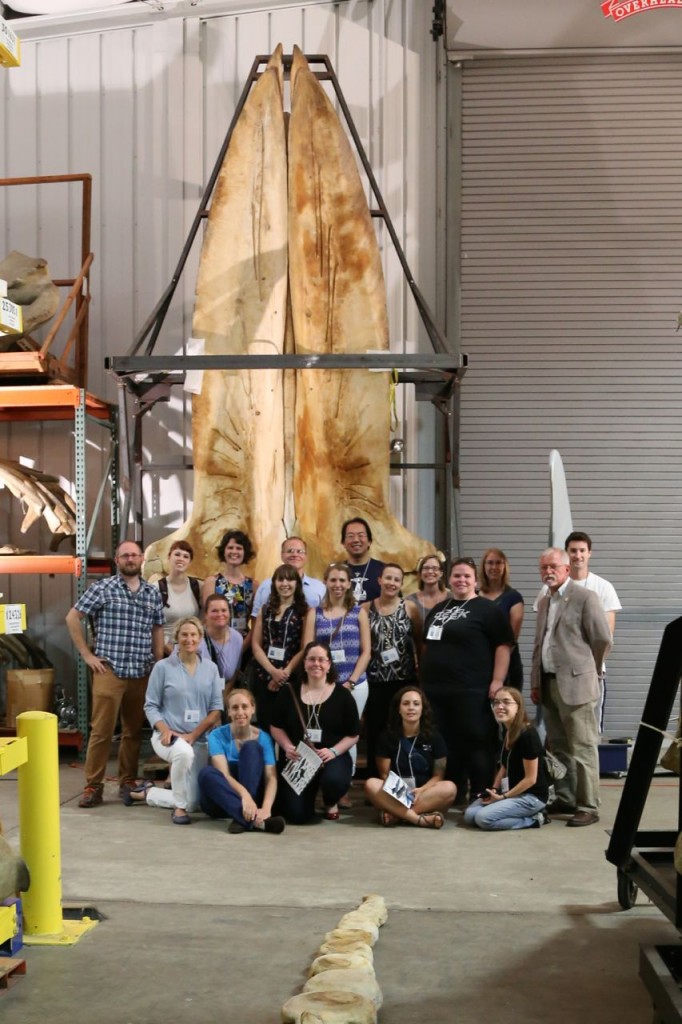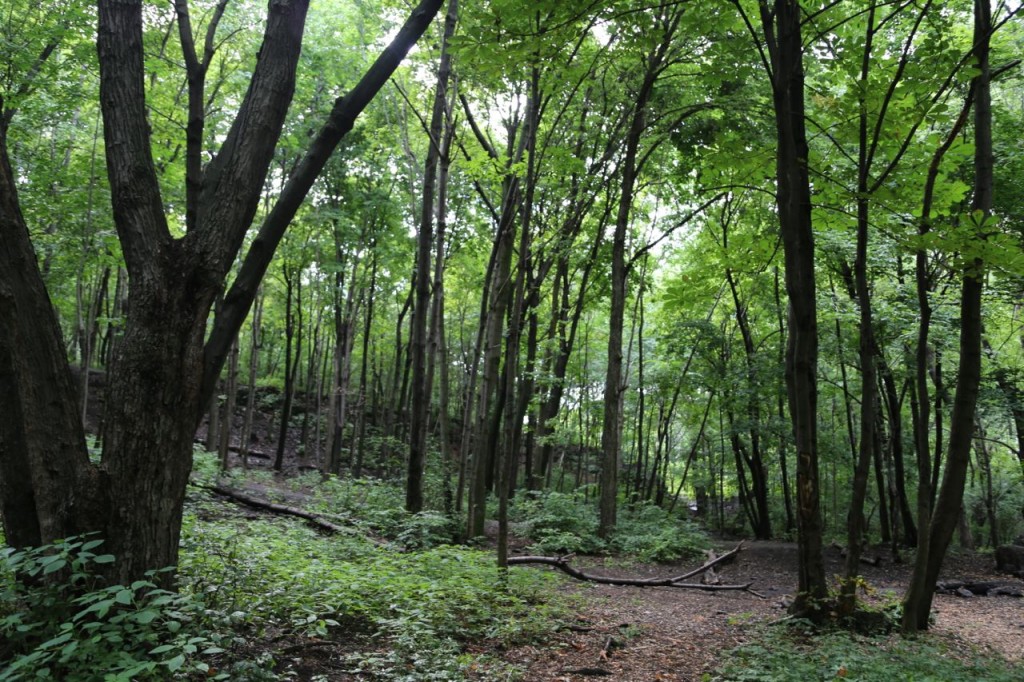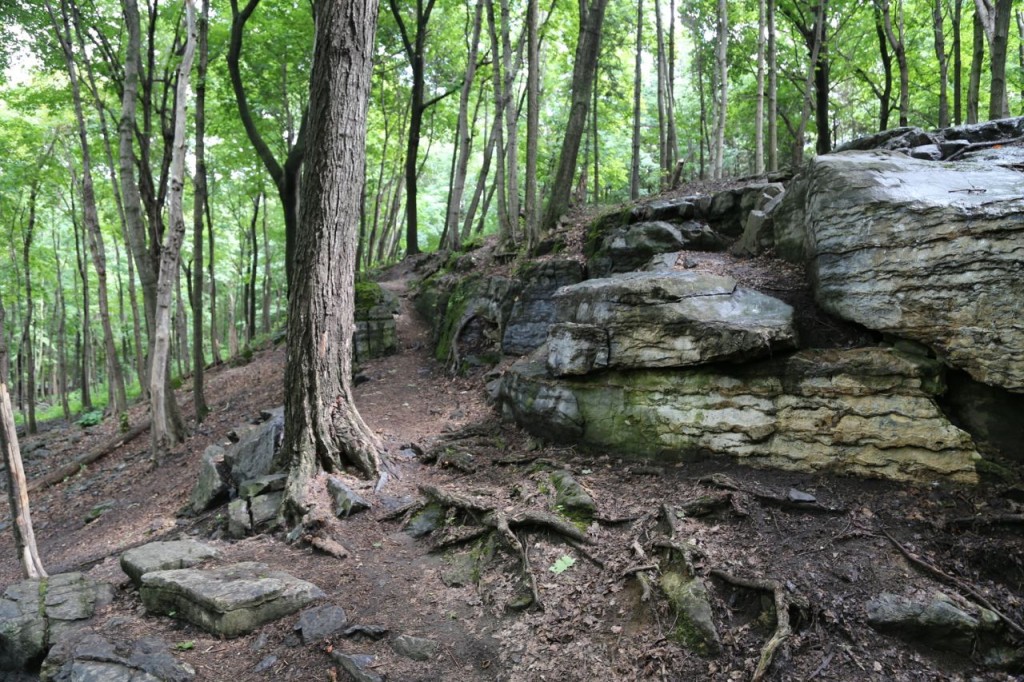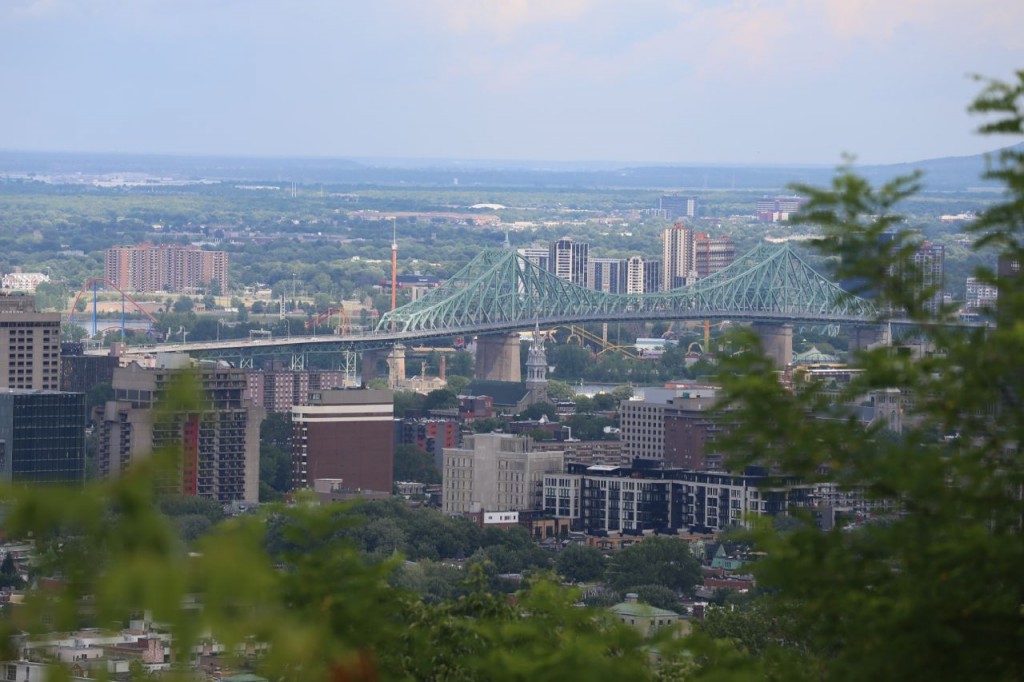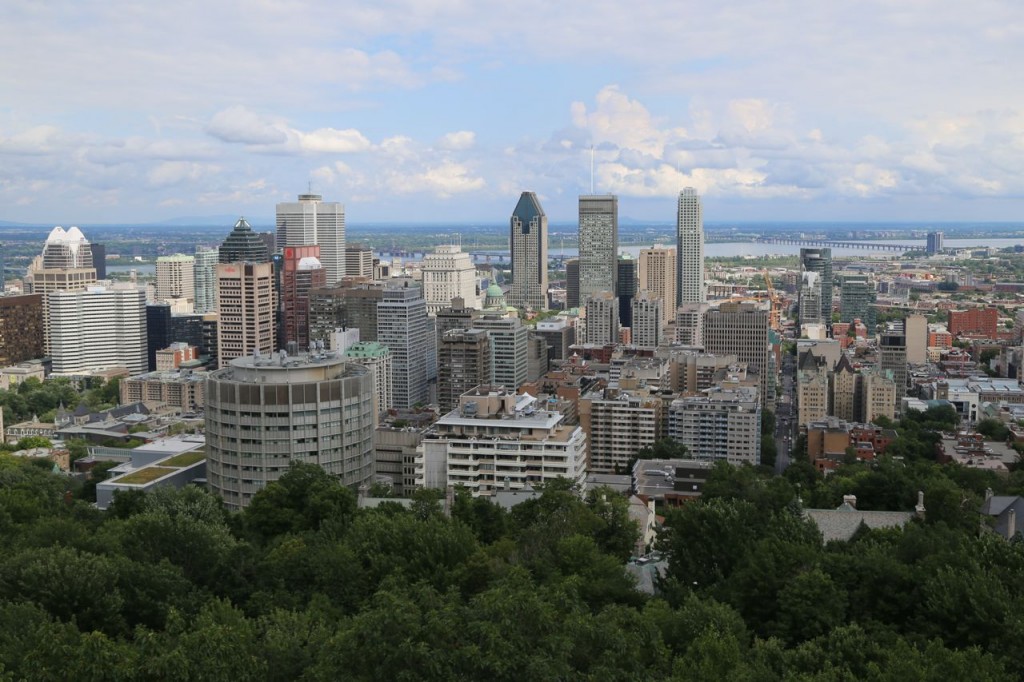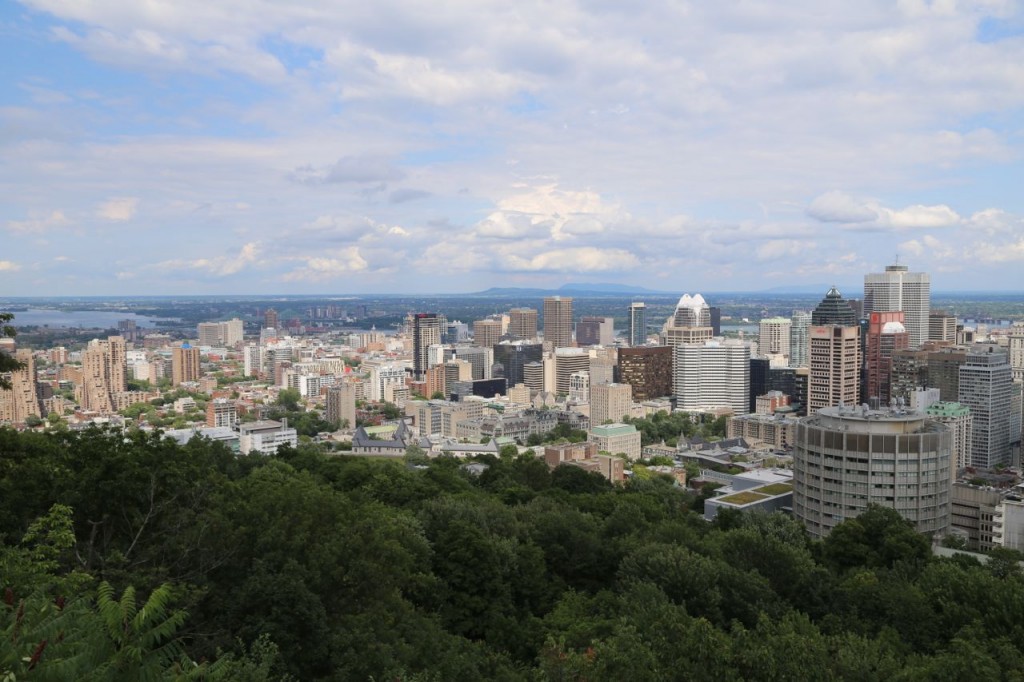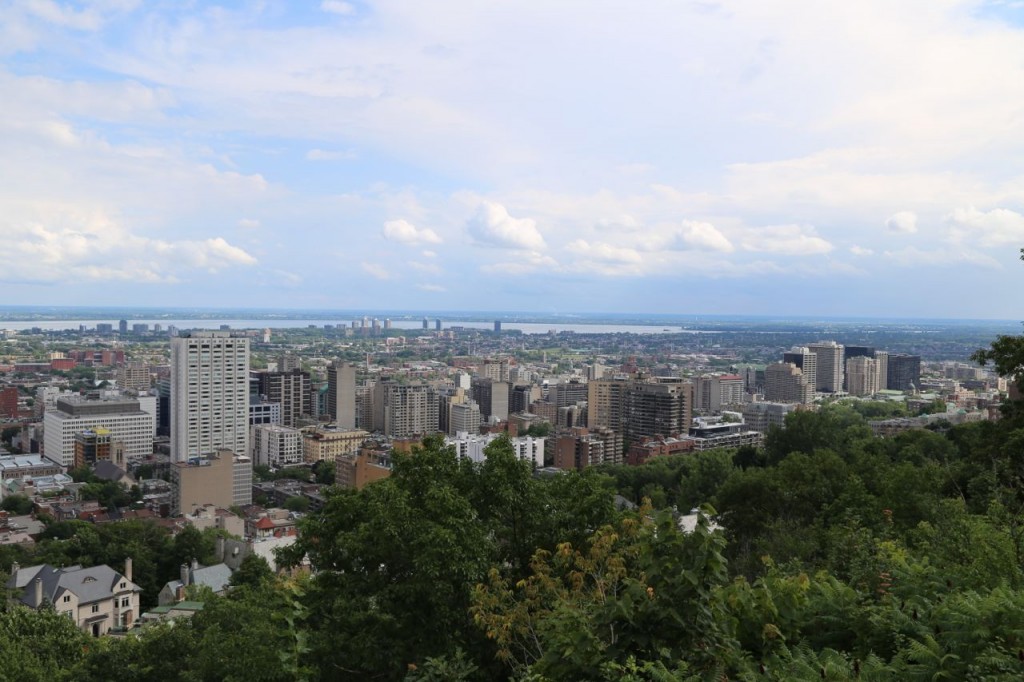While touring El Morro, I discovered that it is guarded by a platoon of iguanas. I will assume that is what they are all doing there. That, and most of them seem to be there because they know that is where there is a lot of tourists, and the iguanas like to have their photos taken. Iguanas are hams. One was posing on the top level. I took a few photos, walked away to take photos of the fort, and walked back. The iguana had moved closer to the edge and where the people were. I kneeled down and got out my macro lens, and the iguana obliged by posing to make sure its best side was shown while I took photos for several minutes. Now, I only do what the iguana clearly wanted and post its photos.
Tag Archives: Nature
Milkweed Beauty
I went on a road trip with four friends. Three of those friends, like myself, are photography geeks. We had an absurd amount of camera gear with us. As part of our road trip, we went to Fort Necessity National Park. There we are looking at this historic site, and the four photographers become obsessed with some milkweed seed pods. They are so cool though! Without further ado, some of my photos of the milkweed seed pods.
Newtown Creek
Newtown Creek is a natural creek that now resembles more of an industrial waterway and serves as a divider between Brooklyn and Queens in New York. I recently got a boat tour of it through Open House NY with superb guides from Newtown Creek Alliance and was able to see all the industrial facilities that are on it as well as a few places where its natural state is peaking through. Newtown Creek is heavily polluted because of New York City’s combined sanitary wastewater and stormwater system, which has led to untreated wastewater flowing into the creek during heavy rain events, and also industrial pollution, which has led to it being a Superfund site. A trip down Newtown Creek is almost history lesson down NYC’s past with some historic sites still visible like an old Standard Oil building. More modern parts of NYC also lie on the creek, most famously the newly redesigned and rebuilt Newtown Creek Wastewater Treatment Plant and its eight stainless steel digester eggs.
Greece: Naxos Countryside
This morning we went on a hike in the Naxos countryside through a few small villages. Our destination was the Kouros, but really the journey was the best part. We walked along a rather small road, which should almost be put in quotes but they do drive on it. There was a small aqueduct running alongside the road that appears to convey water from mountain runoff and springs to farms below.
Cape Sounion
This afternoon, the tour group I am with went to Cape Sounion, which southeast of Athens to see the Sanctuary of Poseidon. The trip was worth it just for the view during the ride and especially at Cape Sounion. The Aegean Sea is so amazingly beautiful and so blue.
Cherry Blossoms
Cherry blossom time is about one of the nicest times of the year in the Washington, DC area. I took two trips to the Tidal Basin to photograph the blossoms during peak bloom. Below are a few of my favorite photos.
Snow
When I took Ferdinand out to play in the snow, I also took photographs of the snow. A fresh coating of several inches of snow has an amazing way of making everything look peaceful and beautiful. I like the way it sort of unifies everything. You are not sure where the grass and plants end and the rocks begin.The snow calls attention to the shape of branches and how thick they are or are not.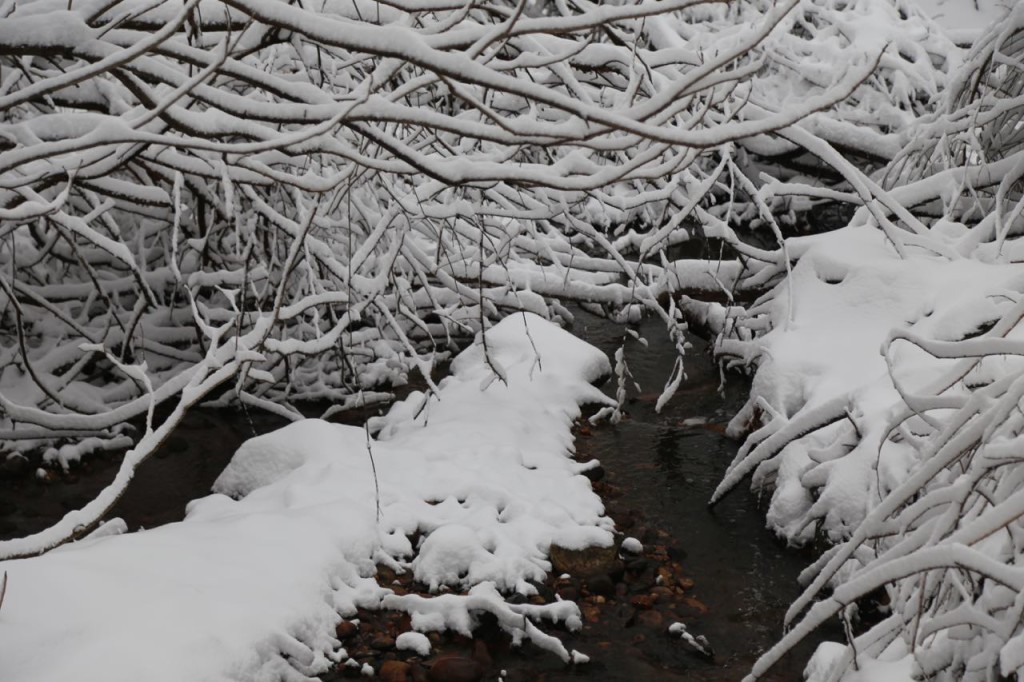
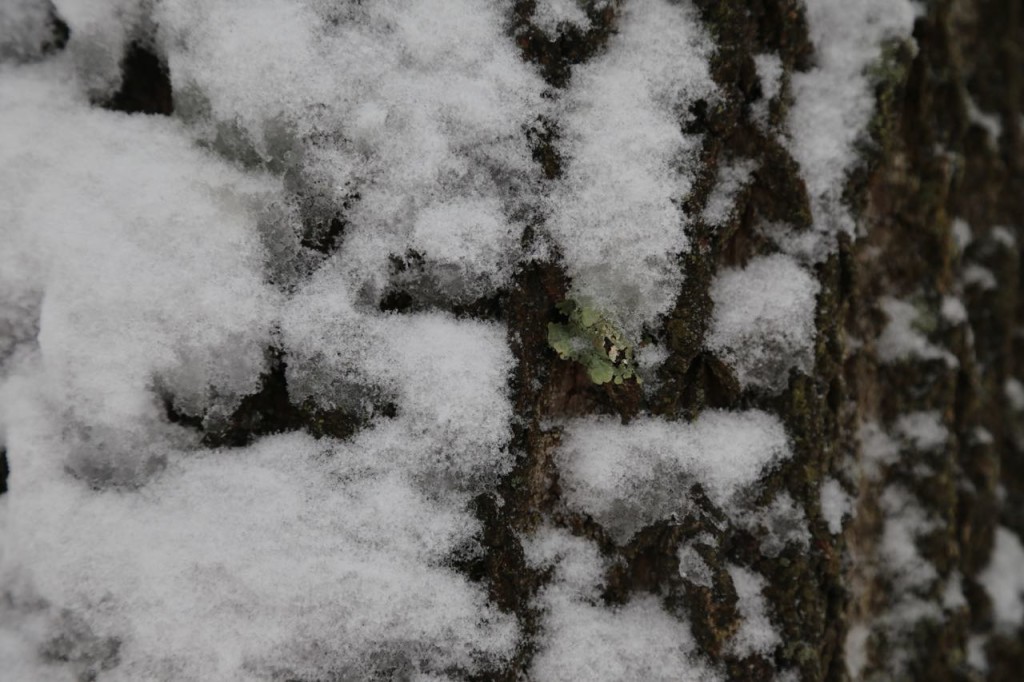
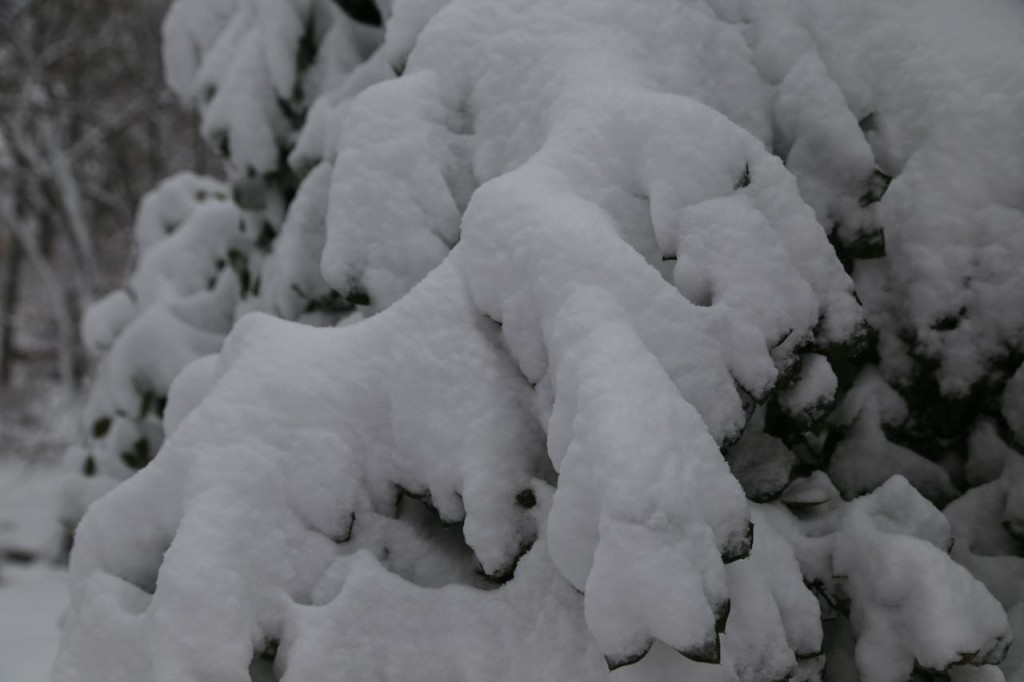
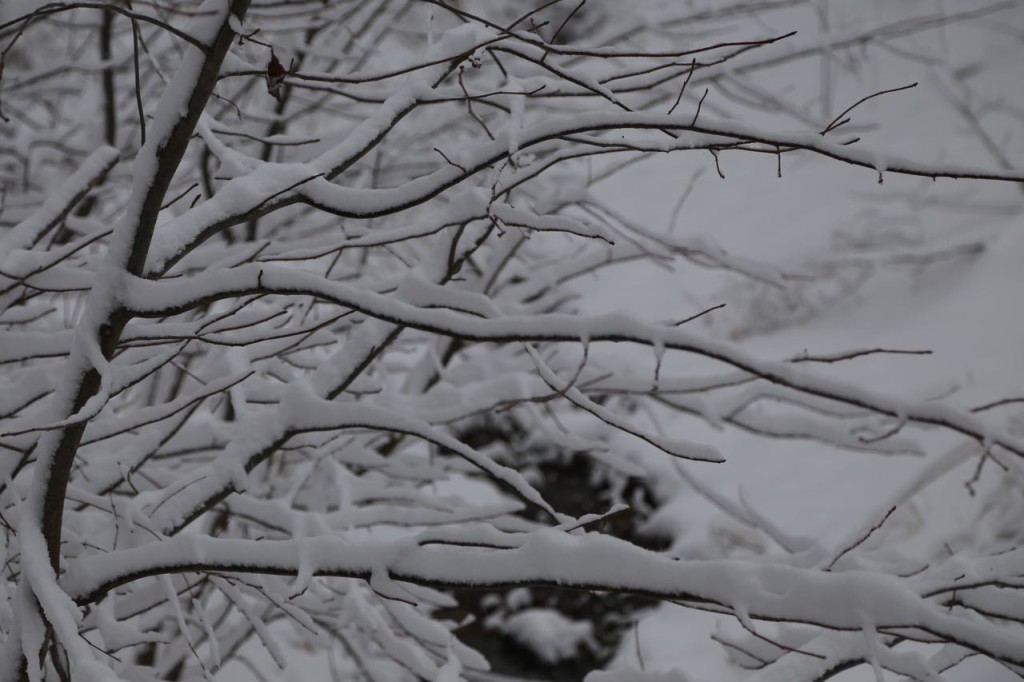
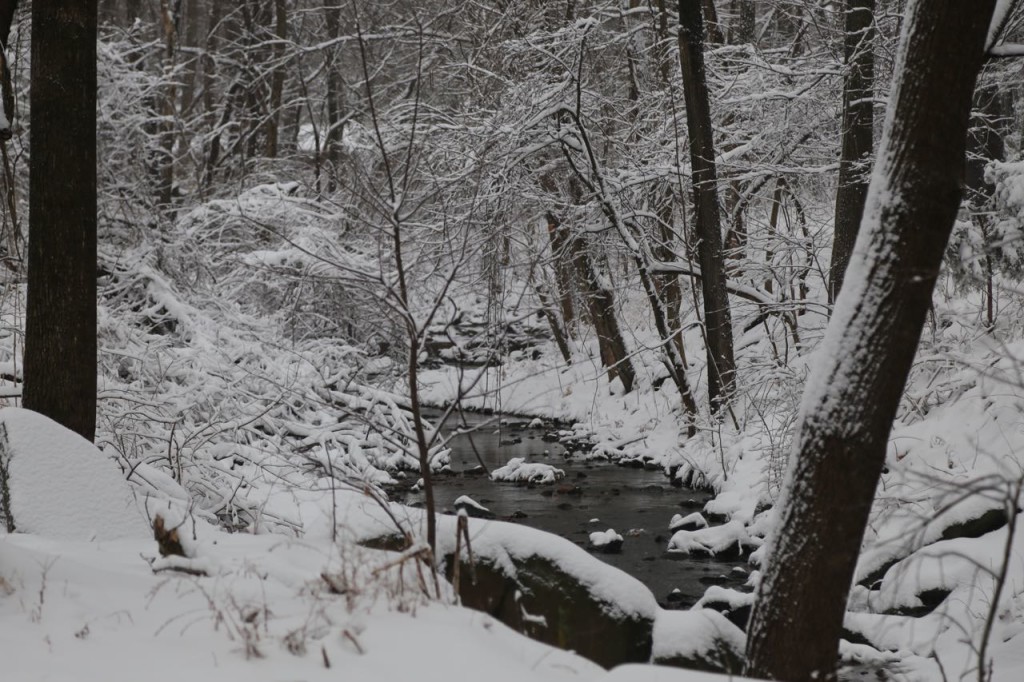
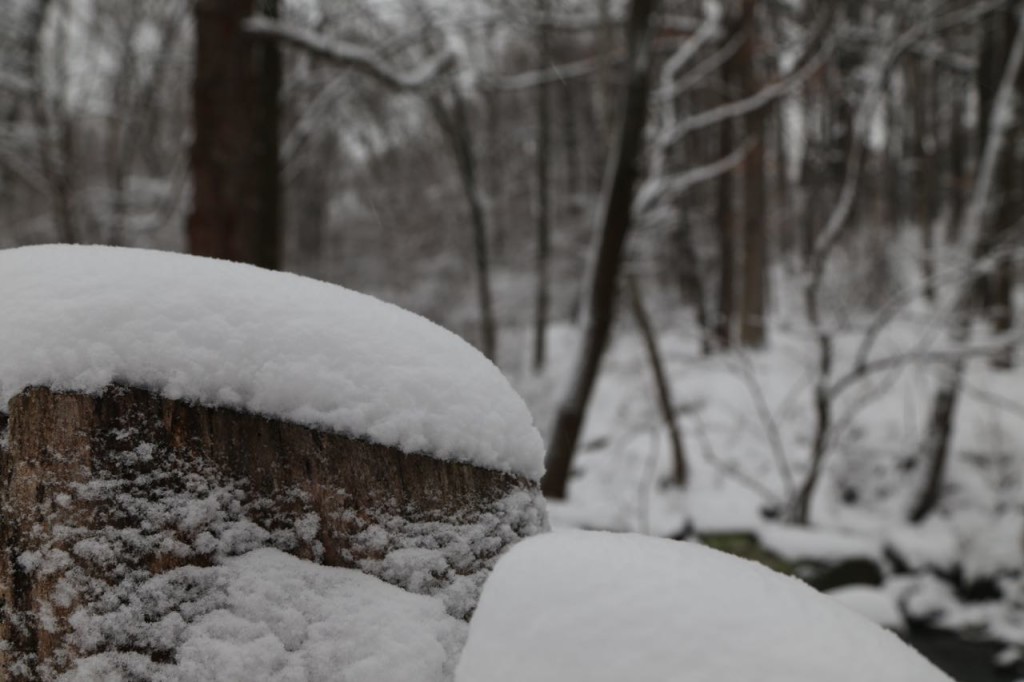
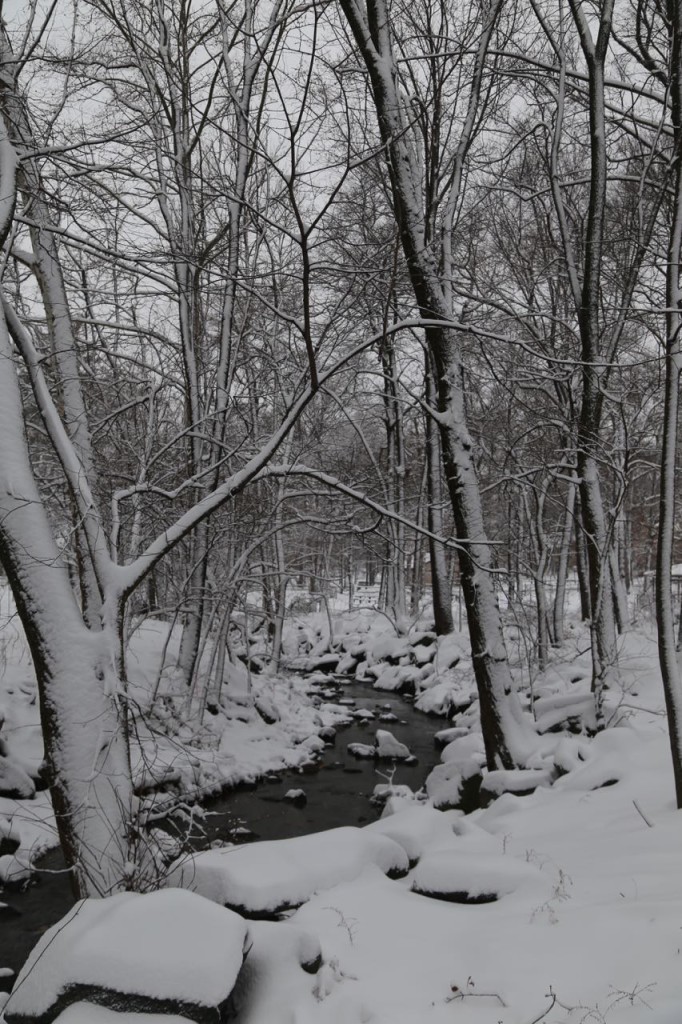
Conversations I have with my Mom
Mom: Did that thing bloom again?
Me (looking confused): At my house?
Mom: No, the thing at the botanical garden. You know what I mean.
Me: The corpse flower?
Mom: Yes, but don’t call it that. I think it should be called by its botanical name.
Me: You prefer to call it giant misshapen penis?
Mom: No, call it by its Latin name.
Me: Its Latin botanical name, Amorphophallus titanum, means giant misshapen penis.
Mom: Oh, well yes, that is a better name to call it.
Me: Ok, well, no, it hasn’t bloomed that I know of. Last time it was in the news.
NMNH Cetacean Collection
Friday I got the incredible opportunity to take a behind the scenes tour of Smithsonian Institute’s National Museum of Natural History. They let a small group of people take a tour of the cetacean collection stored in an offsite location. NMNH has the largest marine mammal collection in the world, and it is awesome. [More properly said, the people of the USA have this amazing collection, and NMNH has been endowed to take care of it.] Most of their specimens are not on display to the public but are stored offsite and in a manner where they can easily be studied. Charley Potter and Nick Pyenson, scientists at NMNH, showed us many of the cetacean specimens, talked about what they do, and answered our questions. I want to thank NMNH and their staff, especially Hilary-Morgan Watt, Katie Sabella, and Trish Mace, for letting us take this amazing tour. Also, thank you to Steve Thornton, a visiting researcher, who gave us a detailed description of how dolphins use their nasal passages to make noises, which at least in my humble opinion is fascinatingly and amazingly complicated. Also, I would like to thank them for having their specimen collection online. I missed some of the species names of specimens we looked at, but because the specimen number was visible in some of my photos, I was able to look up information about the specimen through their website. This is an incredible resource.
They had two bottlenose dolphin skulls out sitting side by side. One was from a coastal bottlenose dolphin, and one was from an offshore one. When sitting side by side, it was easy to see how much smaller the coastal one was than the offshore one. The morphological differences relate to their different eating habits, as the offshore ones feed on larger animals.
They had part of a forelimb bone from a right whale. The fungal like growth on it was bone that had grown around something on which it had been entangled.
There was a drawer filled with narwhal tusks. Only males have the tusks, and most twist in the same direction. Most have a polished end. Up close they really pretty and have interesting texturing. They are hollow with varying diameters.
In the same cabinet as the narwhal tusks are pieces of baleen. Baleen can be used to distinguish different types of whales and is fast growing like hair. Examining the baleen can give information about the trophic feeding level of the whale and can give up to 40 years worth of information on the whale and water conditions, by analyzing it along different points along its length. Before plastics and fiberglass was invented, baleen was split into rods and used in such things as umbrella skeletons, of which they have one.
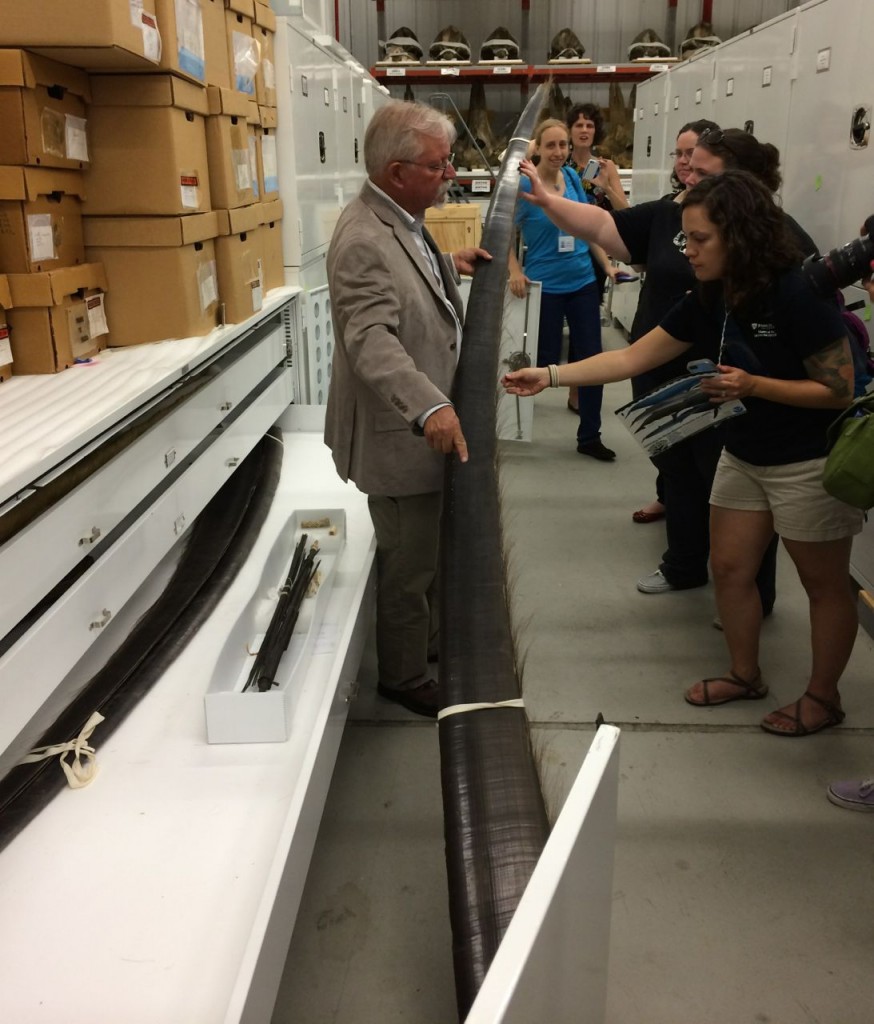
Baleen, Charley Potter is holding one piece. In box in drawer is an umbrella skeleton made from baleen.
They have an amazing collection of skulls. There are skulls upon skulls filling up shelves. The skulls are placed side by side by species and thus can compared easily. There were numerous Baird’s beaked whale skulls that had various shades of white and off white depending on the conditions in which they were found.
The Blainville’s beaked whale skulls were really interesting. The males have two giant, erupted, modified teeth on their jaw, which are used for combat. The beaked whale skulls are the only skulls which can be sexed. The males have very dense skulls and thus are quite heavy when compared to the female skulls that were approximately the same size. They let us life each one by the beak, and the difference was really obvious.
They were still processing some specimens. There was a pilot whale skull out that had a lot dried soft tissue attached to it.
There was another skull sitting next to the pilot whale skull that was some type of beaked whale. I was completely fascinated by the porousness of the bone.
There was also a bag full of vertebrae. I don’t know what species it was from, but the pattern on the vertebrae was really interesting.
In an adjoining building they had the bones from the really large whales. The building was complete with a giant garage type door through which to bring the specimens. There were shelves filled entire vertebral columns from various whales. On the floor was the skeleton of a right whale.
All the skulls were propped up on metal carts. They were placed vertical for easy study. Because of the way a Sei whale skull was placed vertical, the radiating lines on the palette could be easily seen. All baleen whales have these lines, and the lines house blood vessels and nerves that feed the baleen.
There were several gray whale skulls all sitting next to each other. The skulls were collected from various years and includes one from pre-1850s. The genetic makeup of the whales before and after the whaling industry can be compared, and it will give information about the genetic bottleneck that occurred due to whaling and the diminished population.
They also had a blue whale jaw bone that is not only the largest blue whale jaw bone ever collected, it is also the largest single bone ever collected from any creature that has lived on Earth.
Finally there was a North Atlantic blue whale skull, which was just amazing to view. It completed dwarfed us when we gathered for a group photo in front of it.
Parc du Mont-Royal
After spending some time enjoying the tam-tams, I went further into Parc du Mont-Royal to do a little hiking and to visit the overlooks that I had read have amazing views of the city. The park is on part of a mountain, so the overlooks have wonderful views of the city below on the plain. The Camillien-Houde lookout gives views of the northern half of Montreal Island, and the Kondiaronk lookout gives views from the northeast and southwest including downtown Montreal. I wished I had had more time to hike as much of the park is a dense forest. It is a wonderful park and oasis, akin to New York’s Central Park.

